Last Updated on 16 July 2024
This article recommends a driving tour of Etna, which you can organize and do on your own. A journey through the fascinating Etnean villages, lava flows, mysterious lakes, vineyards, abandoned ancient villages, fruit trees, forests, until you reach the slopes of the volcano, an itinerary of about 150 km, for a duration of 4 days with 3 overnight stays.
Ovviamente puoi personalizzare il viaggio come desideri, soprattutto se non hai molto tempo a disposizione, magari puntando dritto alla cima dell’Etna (Rifugio Sapienza). Questo luogo, dal quale potrai ammirare da vicino antichi crateri inattivi e salire in cima al vulcano, è da vedere assolutamente. Così come Randazzo, probabilmente il più bello tra i paesi etnei. Quindi per riassumere, se la tua vacanza è breve visita almeno Rifugio Sapienza e Randazzo.
Tip from Topsecretsicily: If you are interested in renting a car in Sicily here you will find several good deals. It is a price comparator, allowing you to secure the best price. In addition, low-cost comprehensive insurance is also offered so that you do not have to pay for expensive insurance locally.
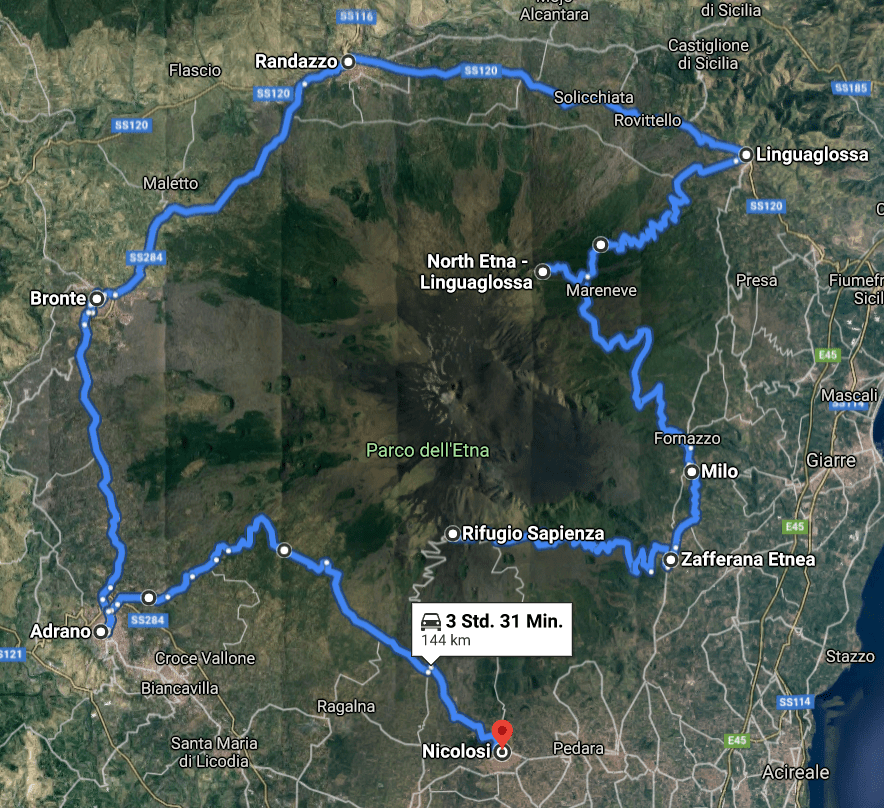
The recommended stops:
Day 1:
Sapienza Refuge —> Zafferana (overnight stay)
2nd day:
Zafferana —> North Etna —>Linguaglossa —> Randazzo (overnight stay)
Day 3:
Randazzo (overnight)
Day 4 :
Randazzo —> Adrano —> Panoramic Tour —> End of Tour
South Etna – Sapienza Refuge, Silvestri Craters
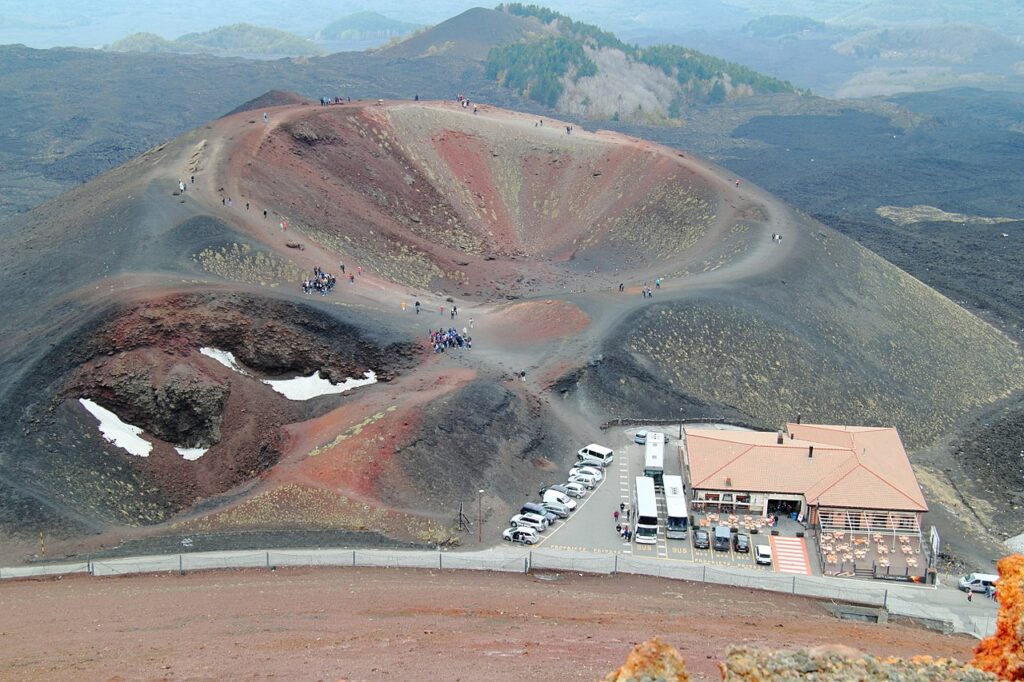
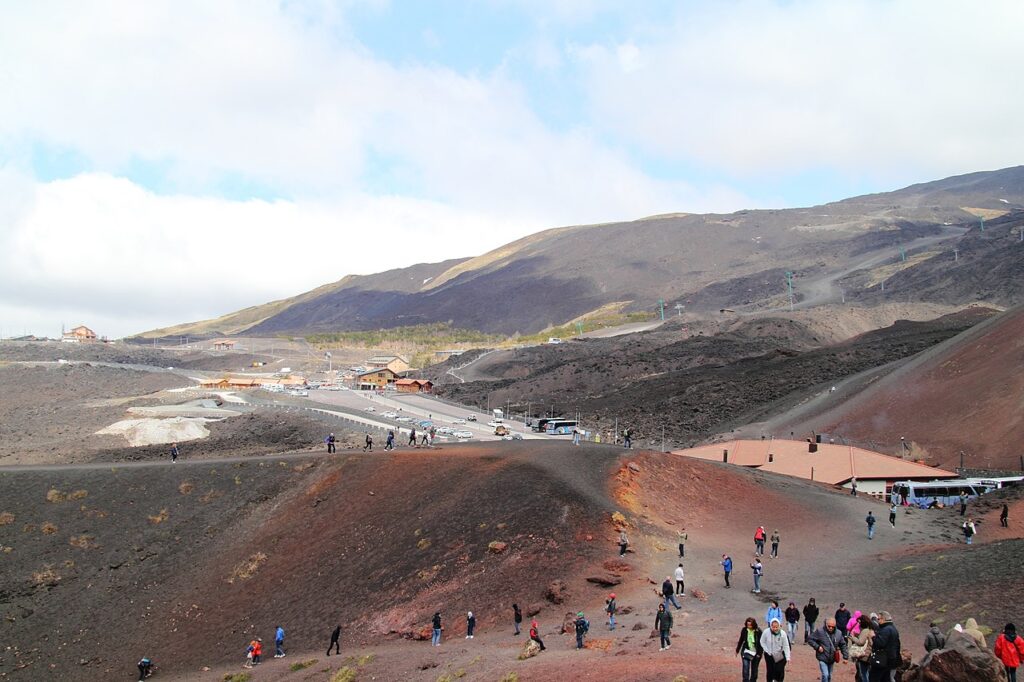
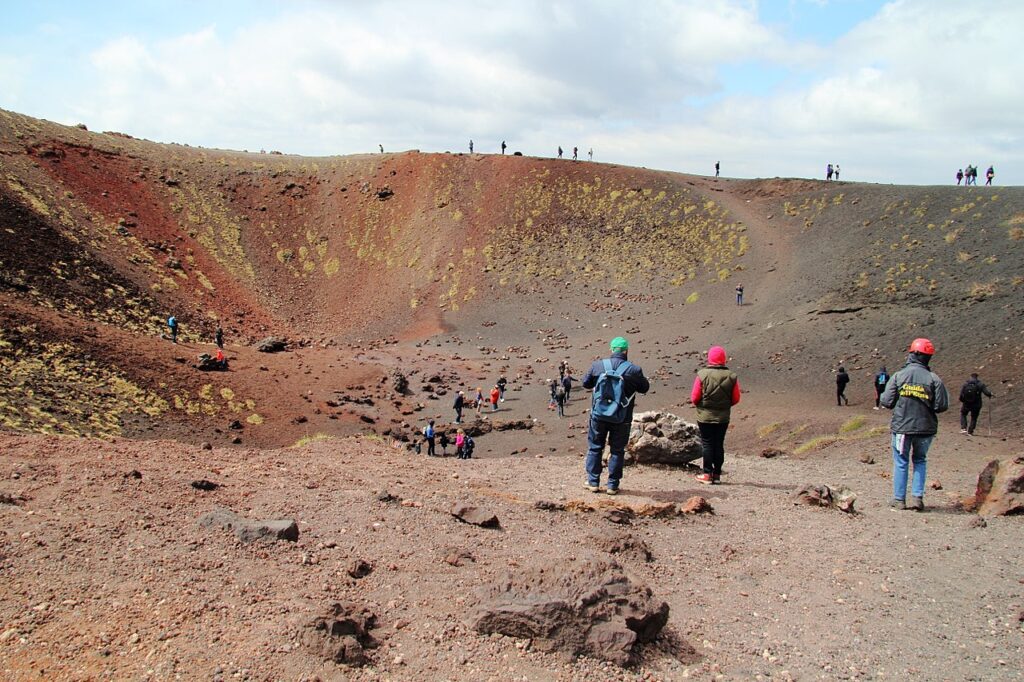
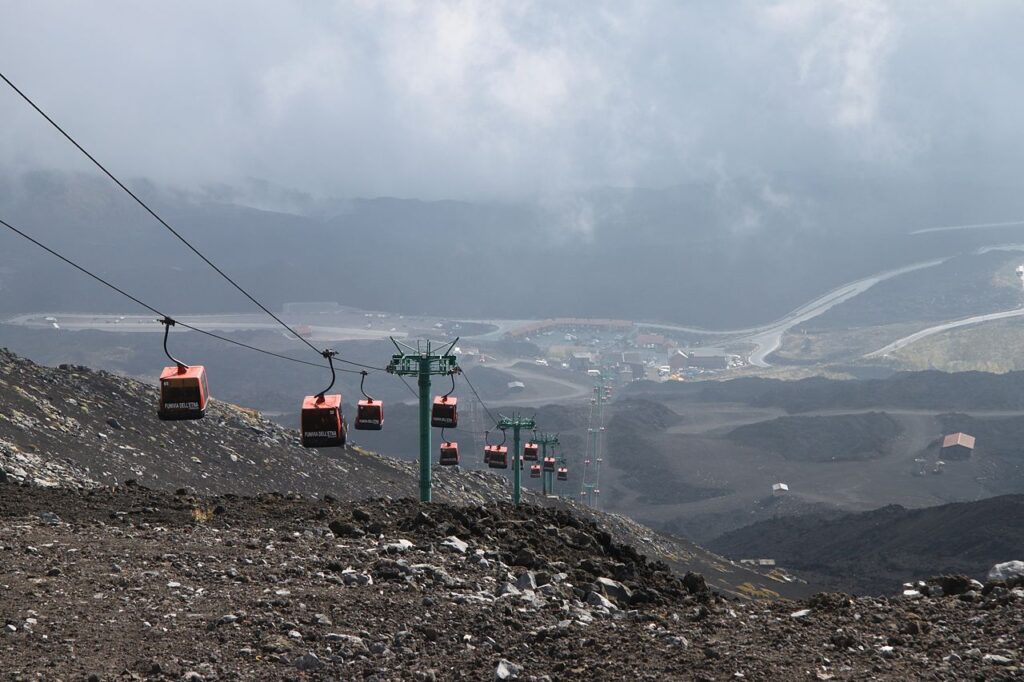
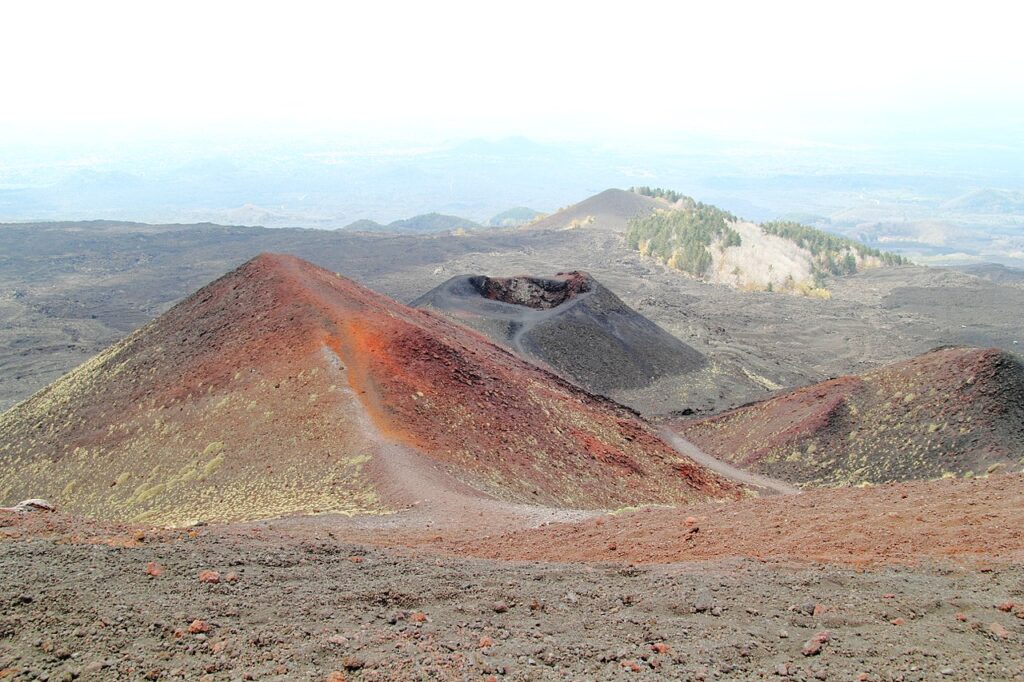
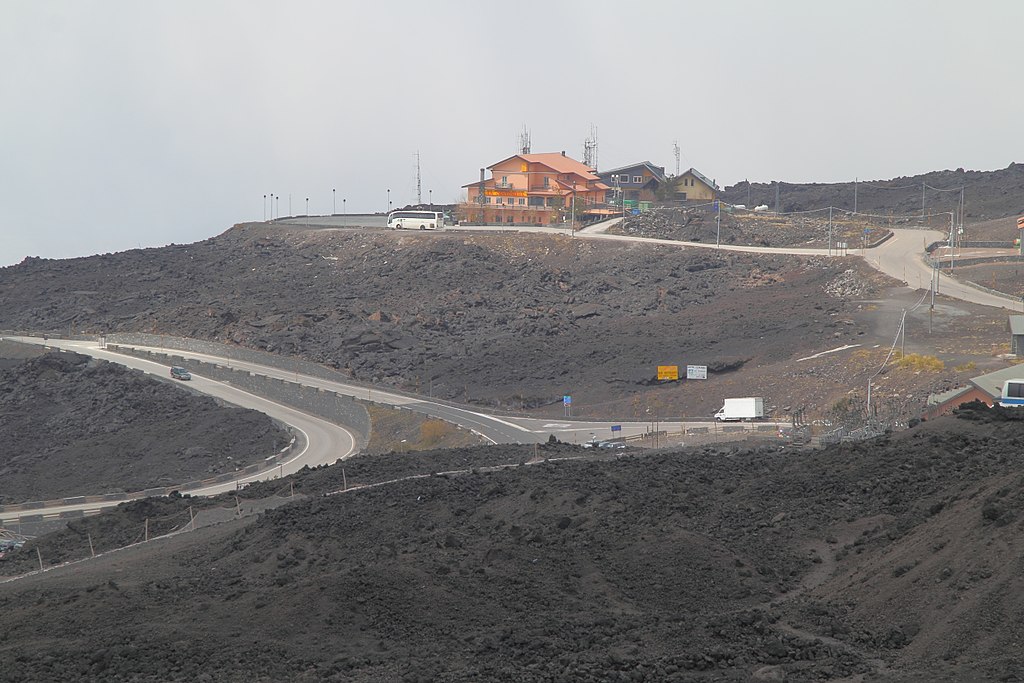
The refuge is located at 1923 meters above sea level and is the best place to observe Etna from nearby . The route is already very special, among woods and impressive lava flows scattered throughout the territory. Once you arrive , it really seems to be on the moon , complete with a sea view of the Gulf of Catania. From here it is also possible to go up with the cable car up to 2500 meters high . More information about the Rifugio Sapienza le find here .
Interactive map South Etna – Points of interest in purple
Zafferana Etnea
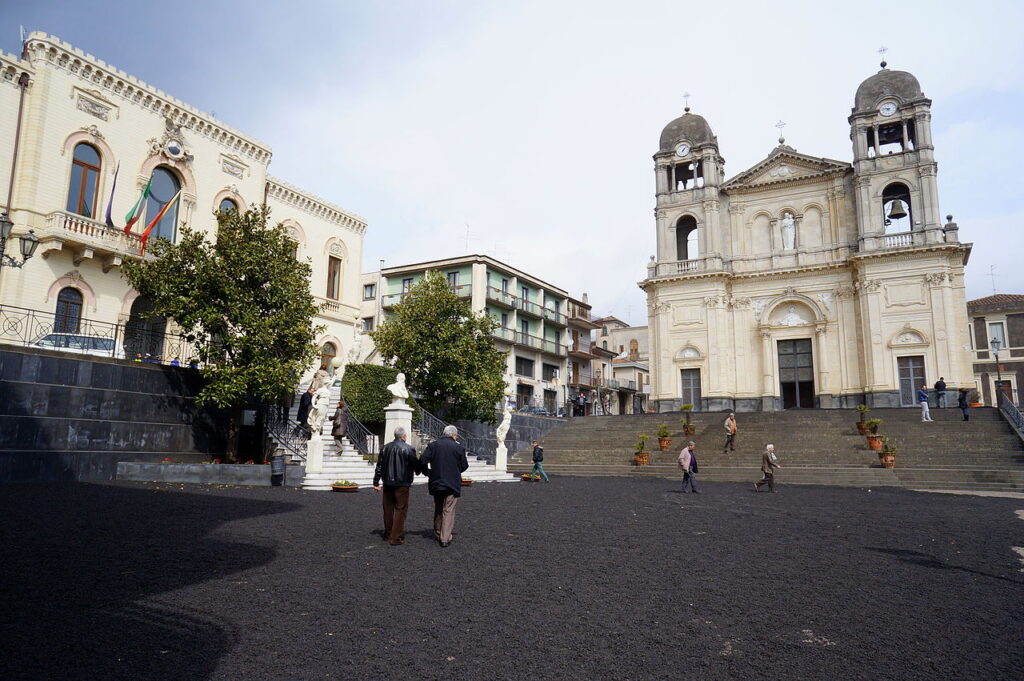
The town is only 30 minutes by car from the Sapienza Refuge and is famous above all for the October festival. Every Sunday in October, the streets of the city are filled with typical products of the area: grapes, wine, honey, seasonal fruit, cheeses, cold cuts, mushrooms, olive oil and much more..
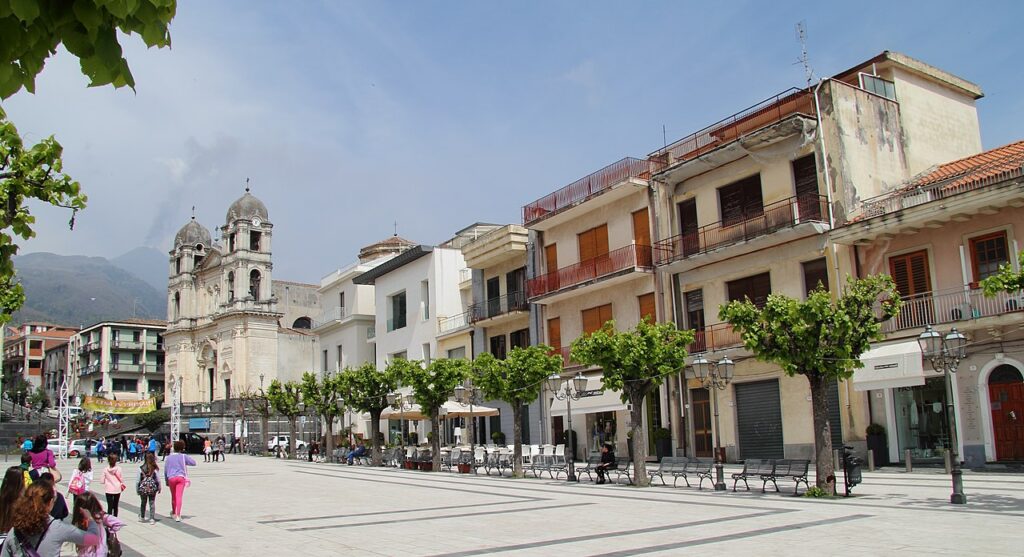
If you don’t have the chance to go to Zafferana Etna one of these days, the country still deserves a quick view . The Mother Church is very nice, rebuilt in 1817 after the earthquake. It is especially striking for the white of the facade which contrasts with the black of the lava stone of the staircase.
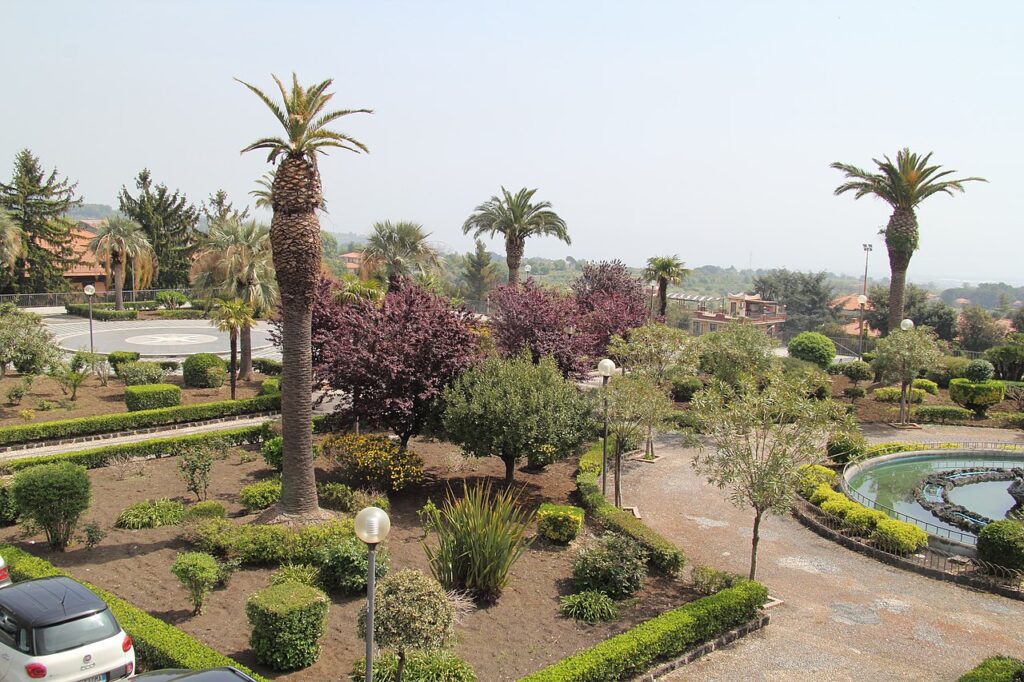
From the adjacent Piazza Umberto I you can also enjoy a beautiful view , with the green of the municipal villa below and the blue of the sea in the distance. In Zafferana there is also the Beekeeper’s House Museum . A small but very particular museum, which shows you the secrets of the ancient art of Sicilian beekeeping. Here you can try and buy excellent honey, also flavored with the citrus fruits of the island . Always remaining on the subject of typical products, in the Oro d’Etna company, you can taste and buy local products such as honey, wines, pesto and preserves.

About 20 minutes by car from Zafferana, in Sant’Alfio, is the Castagno dei Cento Cavalli, which with its 3000 years is the oldest tree in Italy . The tree consists of 3 large stems and is particularly striking for its width. Its name derives from the legend of Queen Joan of Anjou who, surprised by a furious storm together with her hundred knights, found refuge there.
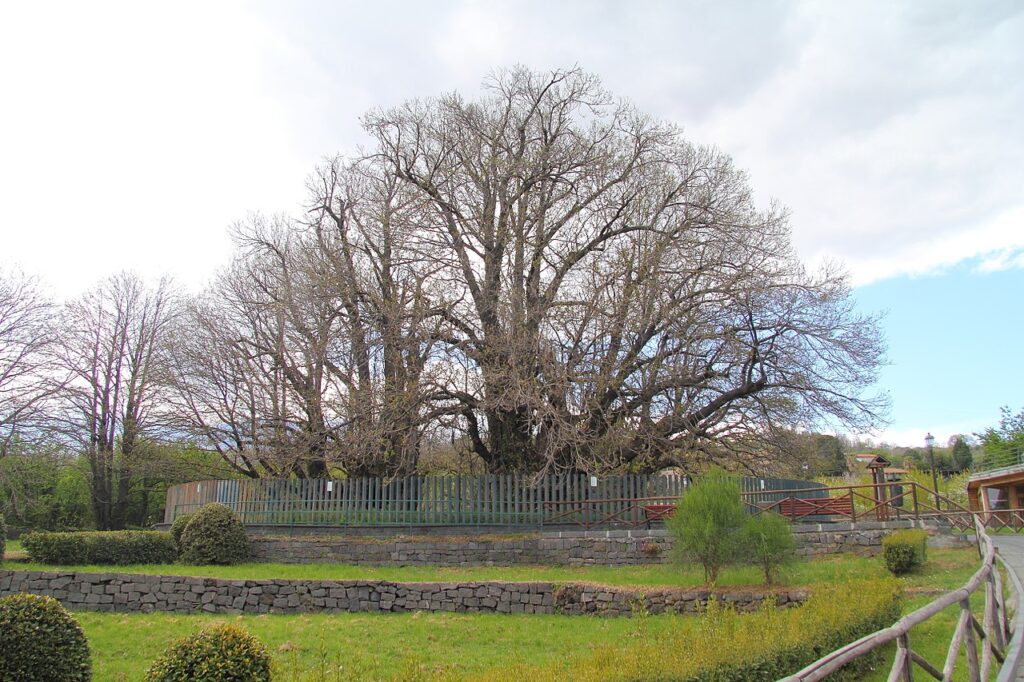
Near the millenary chestnut there are also 2 good restaurants with typical dishes and products and a bar where they make excellent focaccie and granitas.
Interactive map Zafferana Etna – Points of interest in purple
Etna Nord – Piano Provenzana
To reach Etna north you have to take the panoramic Mareneve road, so called because here you can see both the sea and the snow (in winter) . Here too the view is wonderful , between lava flows, gorse and pine forests, with the sea in the background. In north Etna there is less to see than in south Etna, but this does not mean that it is not worth coming here too.
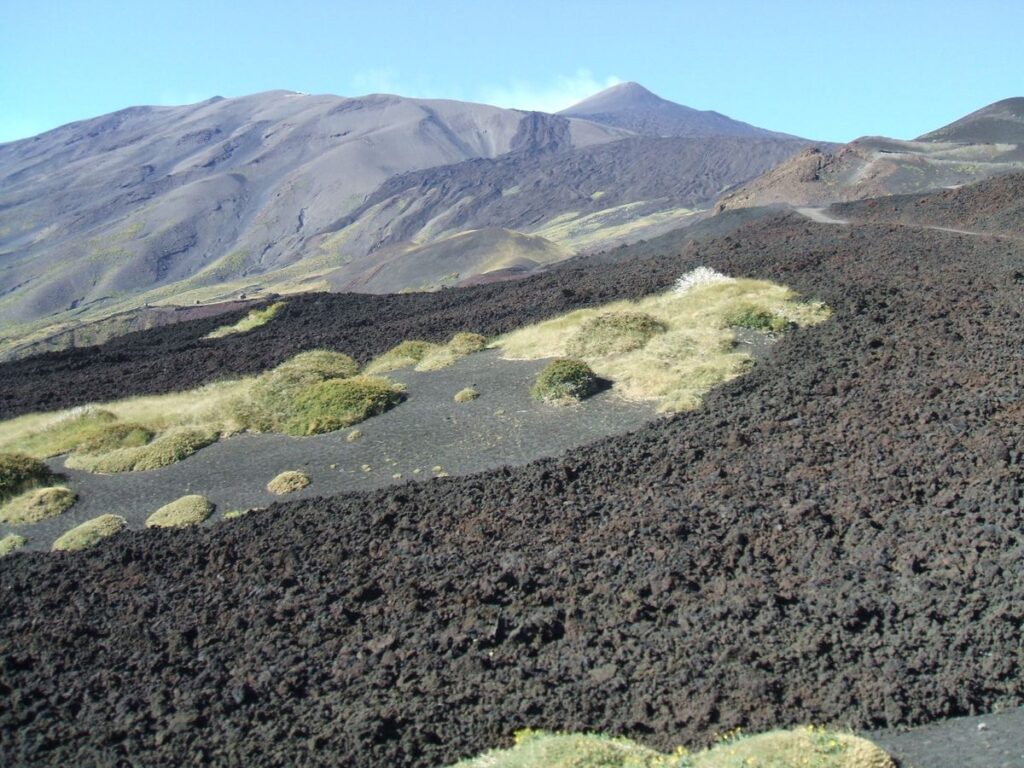
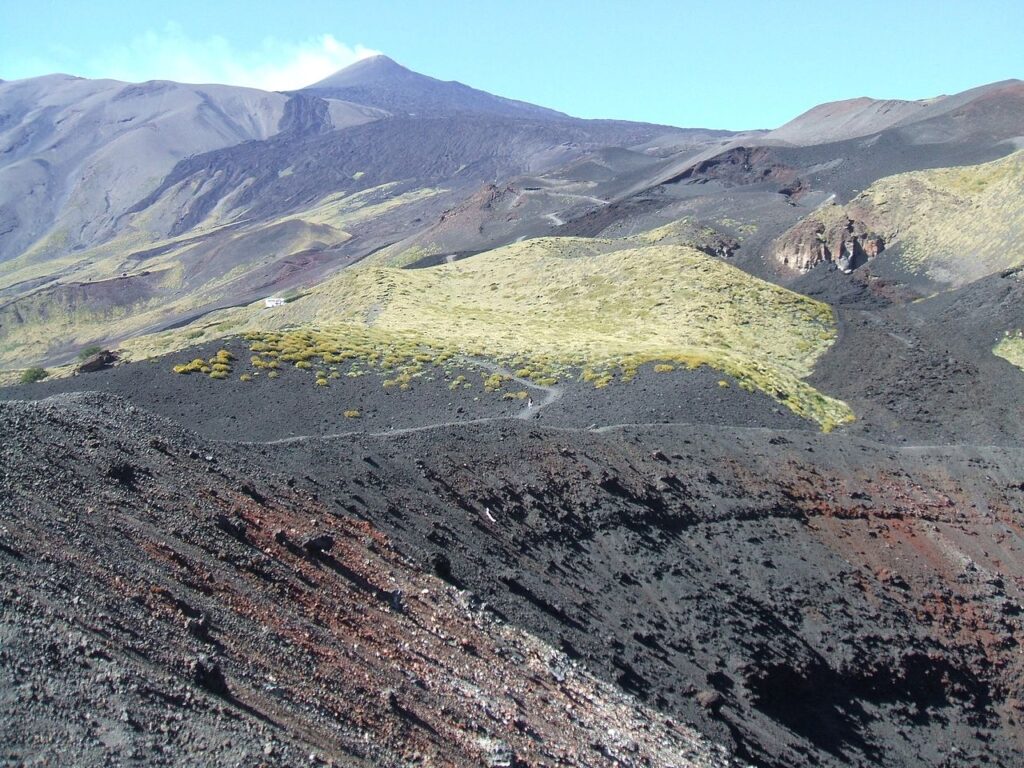
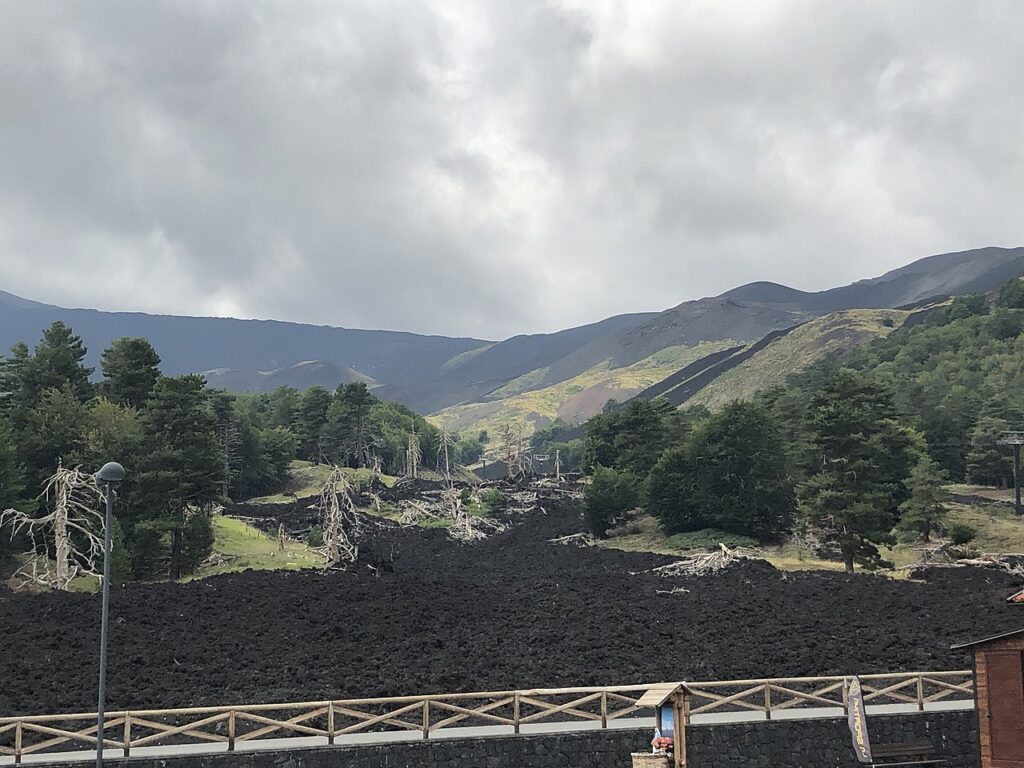
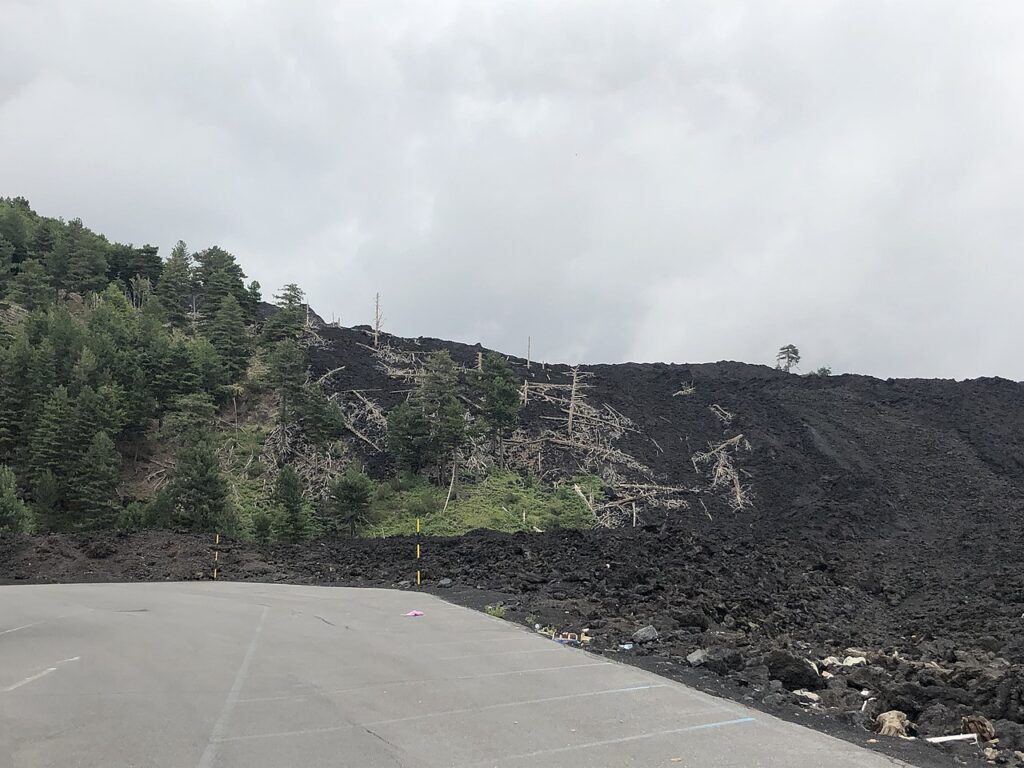
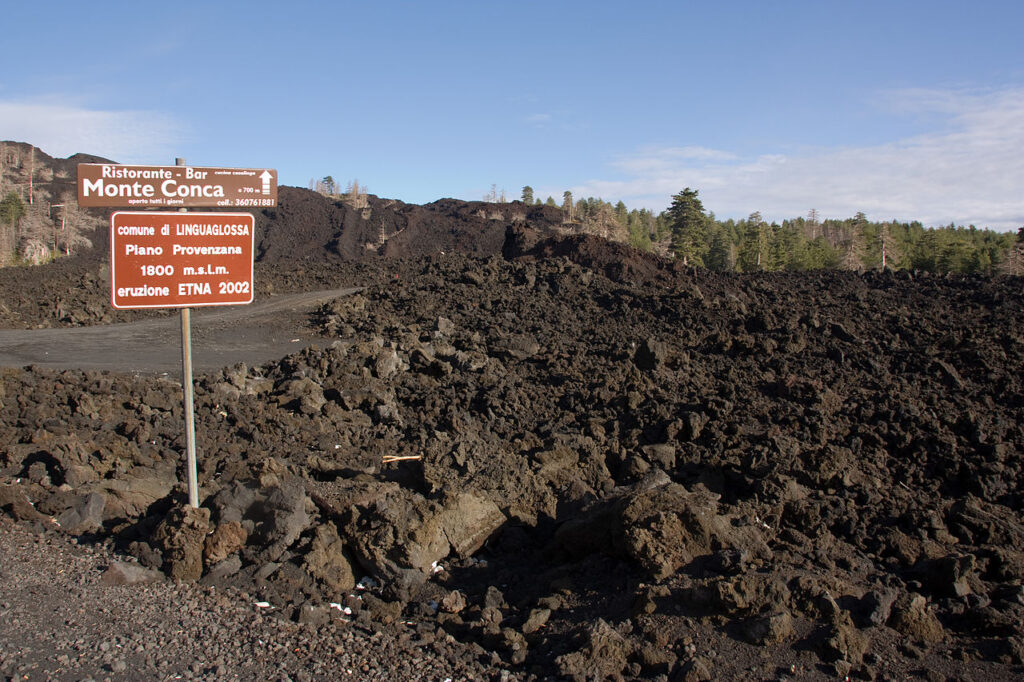
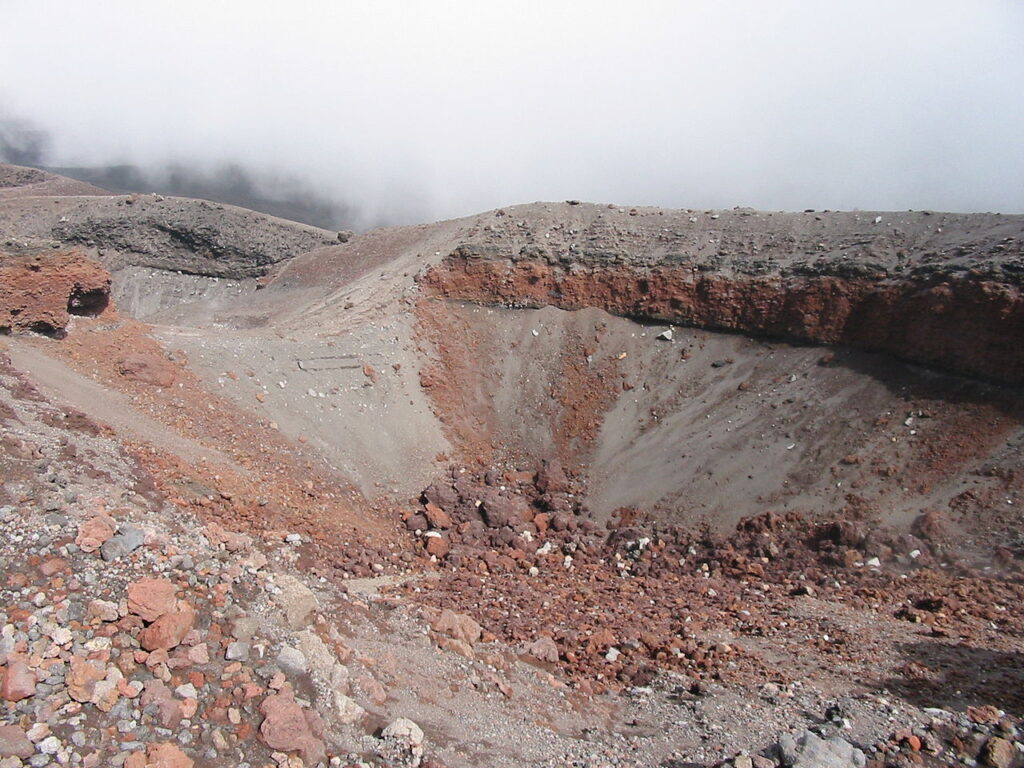
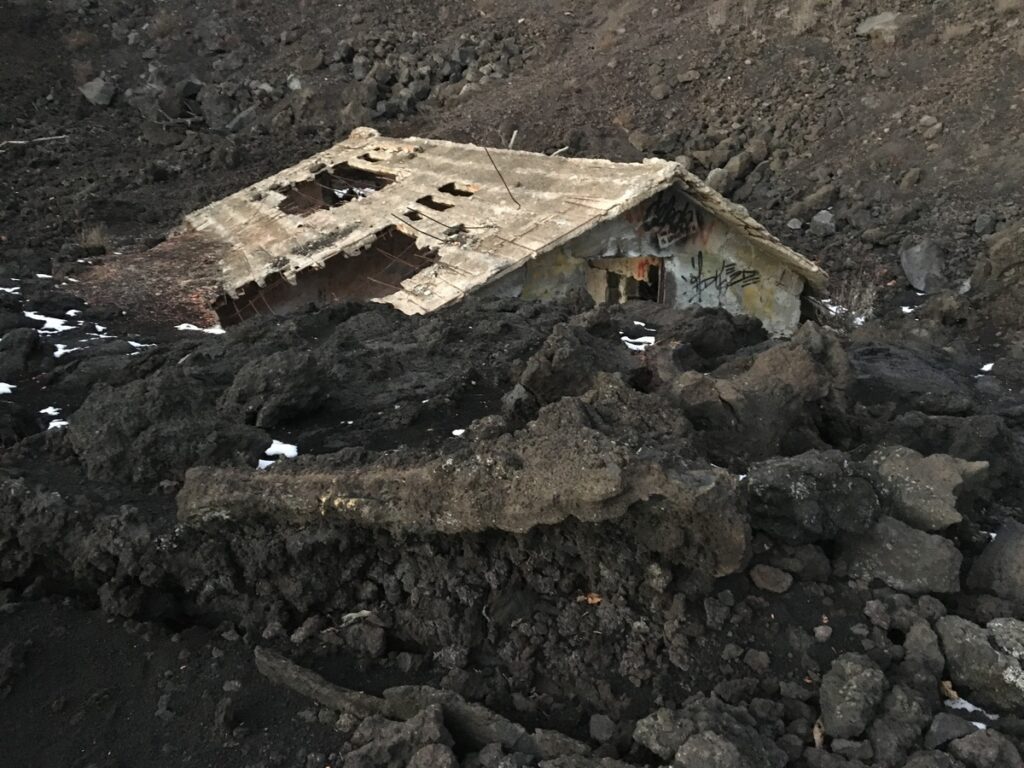
Here in winter it is possible to ski by taking the chairlift, while in the other seasons you can admire the view and take tourist routes alone or with guides , who have an information center here, open every day from 9:30 to 13:00. This is their website: www.guidevulcanologiche.it .
On your own, however, you can reach the craters that opened in the terrible eruption of 2002 in about 30 minutes on foot (from Piano Provenzana). To reach them you will also pass by the ruins of a hotel submerged by lava .
In Etna Nord there is also a nice typical restaurant, very well reviewed and built entirely in wood.
Interactive map of Etna Nord – Points of interest in purple
Linguaglossa

Via Roma is very beautiful, passing through the heart of Linguagloss to and for the main monuments, the sixteenth-century church of S. Francesco di Paola and the Mother Church, built in 1613 and overlooking the town square.
The name Linguaglossa probably derives from a large tongue of lava erupted in the past.

In Linguaglossa there is also the Vivera Winery, a winery where you can try excellent wine and appetizers . The vineyard with Mount Etna in the background is very beautiful. If you are interested you can book a visit by visiting their website: https://www.vivera.it/ .
Interactive map of Linguaglossa – Points of interest in purple
Randazzo
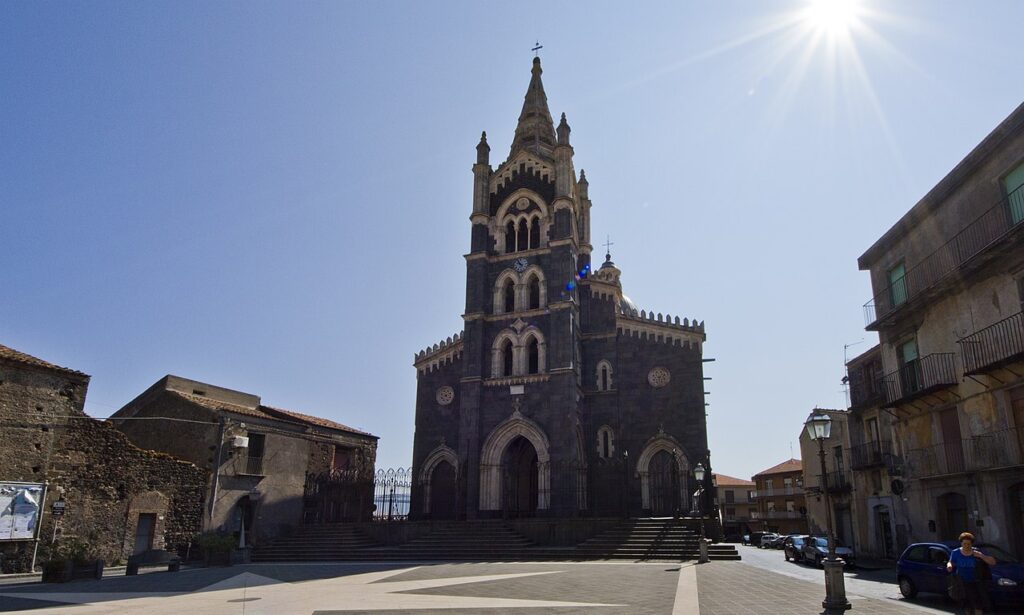
Probabilmente il paese etneo più bello in assoluto. Si trova al confine con il parco dei Nebrodi ed è il centro abitato più vicino al cratere principale del vulcano. Il paese fu abitato già dai greci per passare poi in mano ai romani, bizantini, arabi, normanni, svevi ed aragonesi. Il massimo splendore di Randazzo si ebbe durante il periodo medioevale, dei quale conserva ancora l’aspetto.
Just think that Randazzo was so multicultural, that in the town there were 3 districts, each with its own language: Lombard, Greek and Latin .
The 3 churches built out of lava
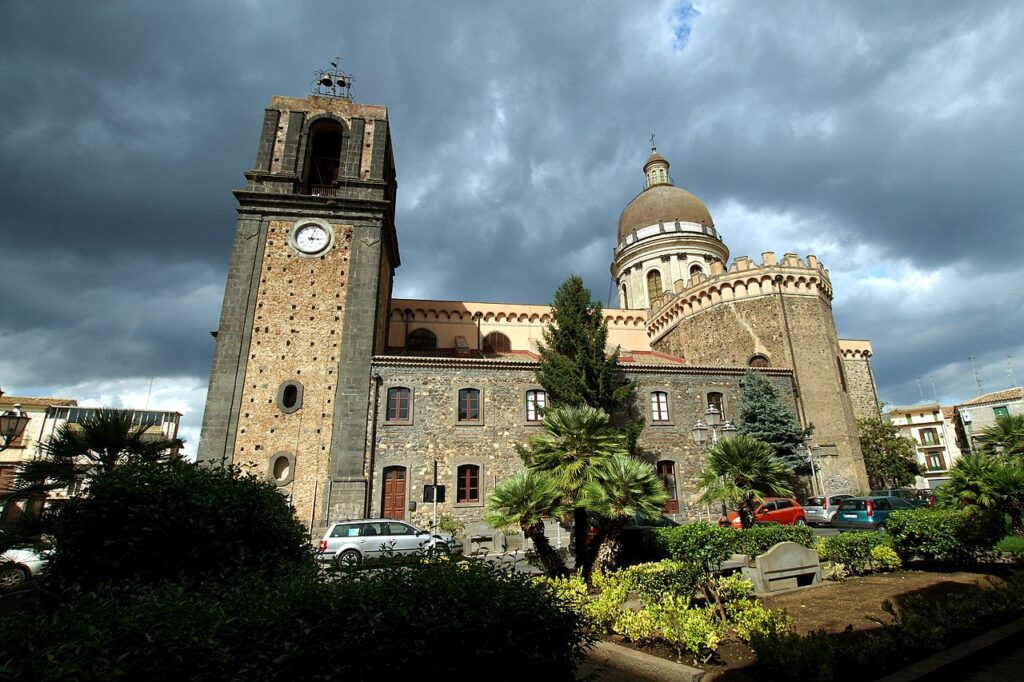
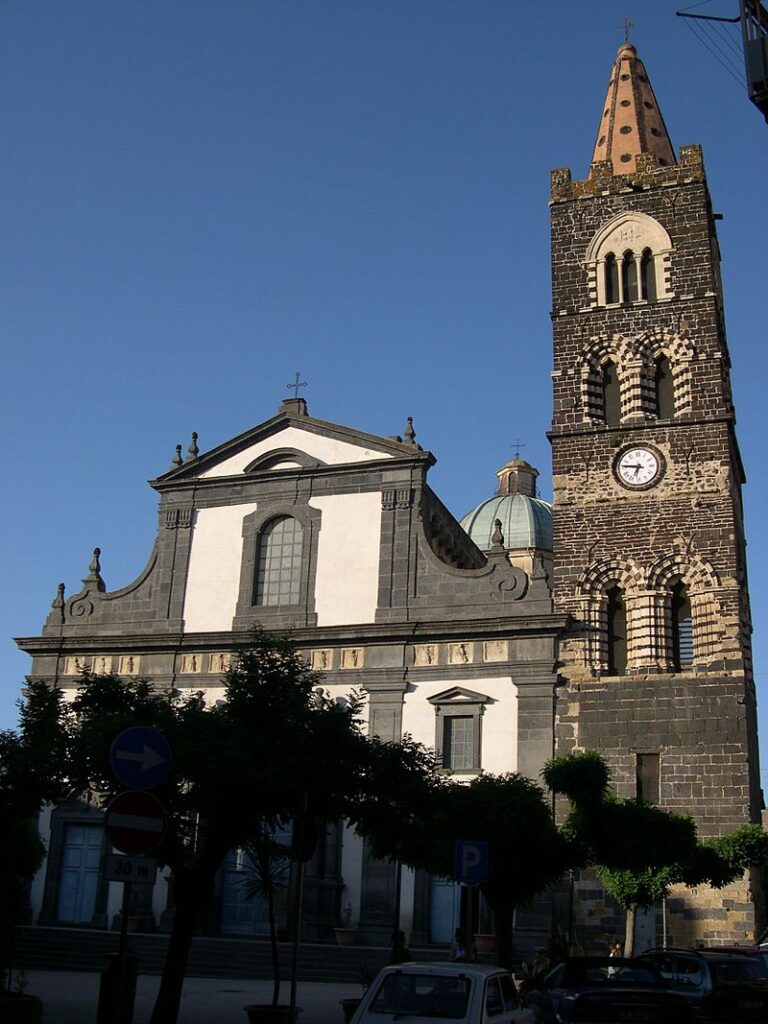
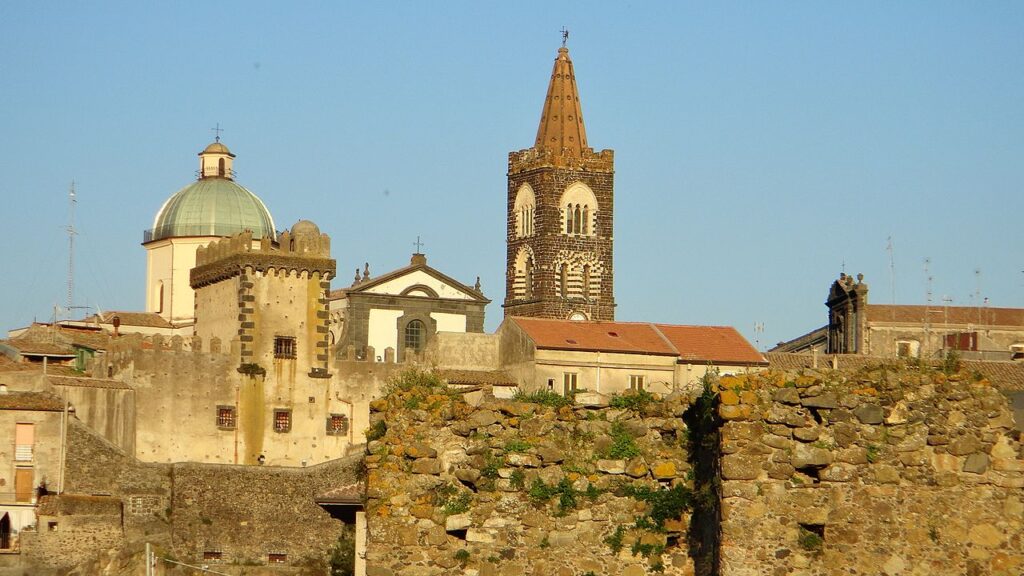
The most beautiful and fascinating churches of Randazzo, built with the lava of the volcano around the thirteenth century, are 3 and are located in 3 different ancient districts of the city.
The Church of Santa Maria Assunta (Latin Quarter) is the main Basilica and was built in the Norman-Swabian style.
The Church of San Martino (Lombard district) of Swabian foundation is characterized by a beautiful bell tower 41 meters high. Near the church is the Swabian castle.
Finally, the Church of San Nicolò (Greek quarter) is the largest in Randazzo and overlooks the square of the same name, where the statue representing the union of the three districts is found: old Randazzo. It, personified by the Giant Piracmone, incorporates the symbols of the three districts: the lion symbol of the Greeks, the snake symbol of the Lombards, the eagle symbol of the Latins.
The Swabian castle tower and archaeological museum
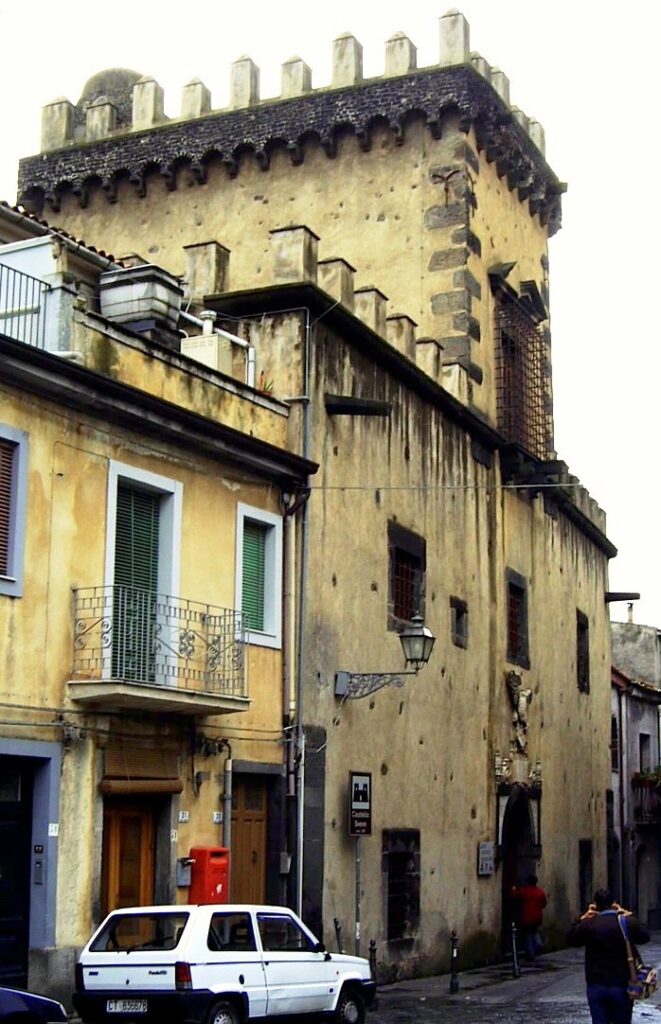
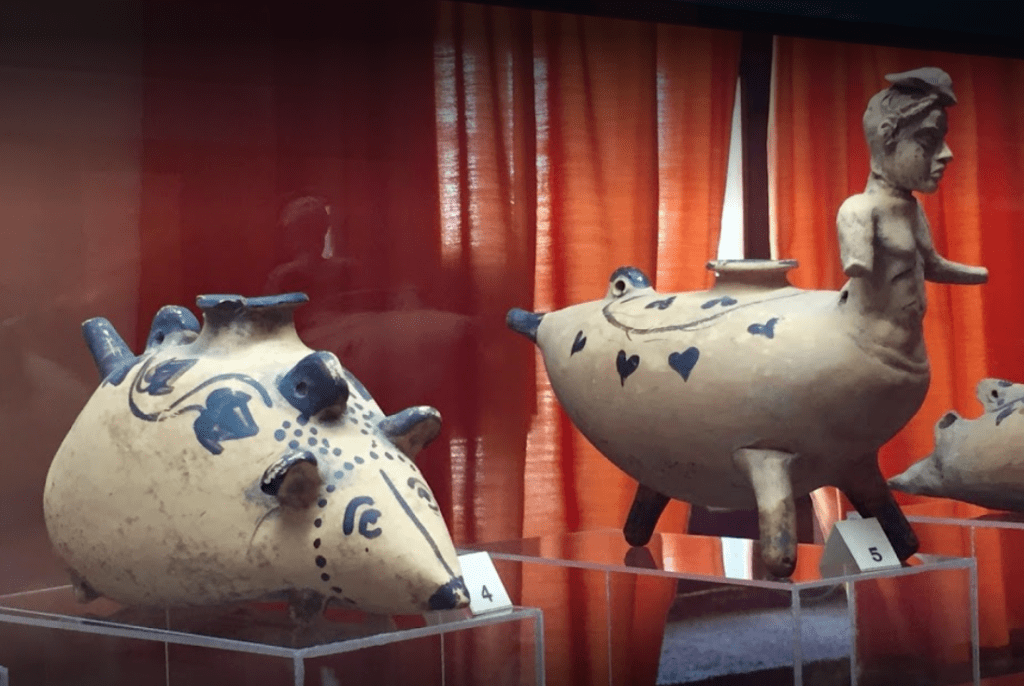
Near the church of San Martino is the Swabian castle (11th century) , or rather one of the original 8 towers, in which the archaeological museum of Paolo Vagliasindi has been set up . It is a collection of Hellenistic finds found by the archaeologist Vagliasindi in Randazzo. The tower was also used as a prison and here you can visit the well of the buried alive, the torture chamber and the gallery of skulls as well as the museum . Hours: 10:00 – 13:00 and 15:00 – 19:00 from Tuesday to Sunday. Price 2.60 Euro.
Capuchin Steps
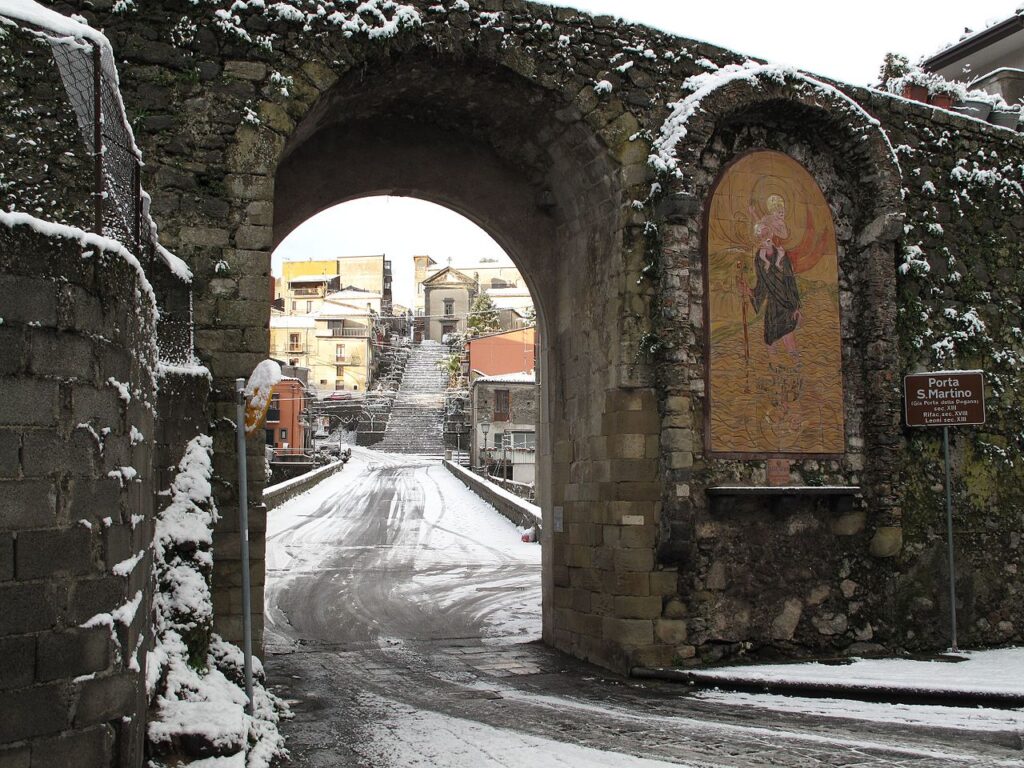
A lava stone staircase leading to the Church of the Capuchin fathers. From here you will have a nice view from above on Randazzo.
Street of the Arches
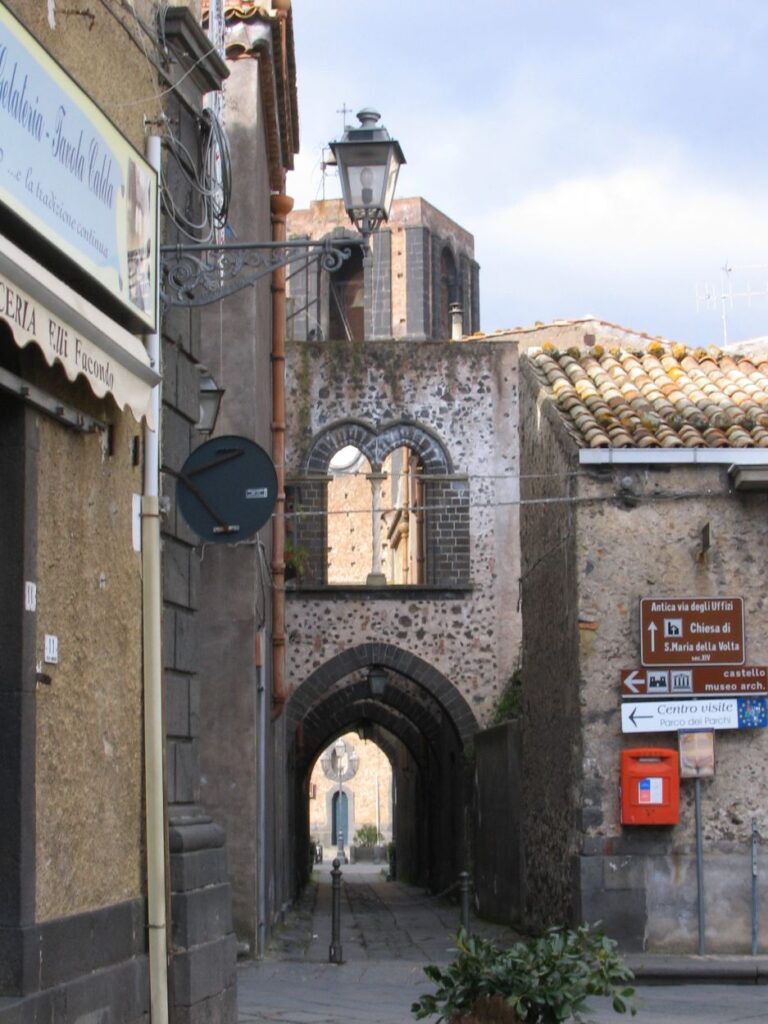
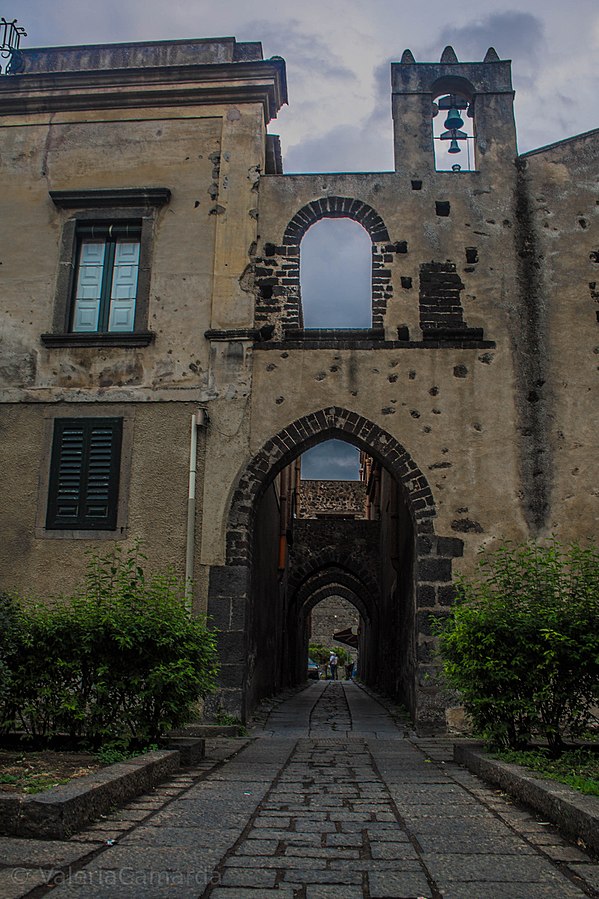
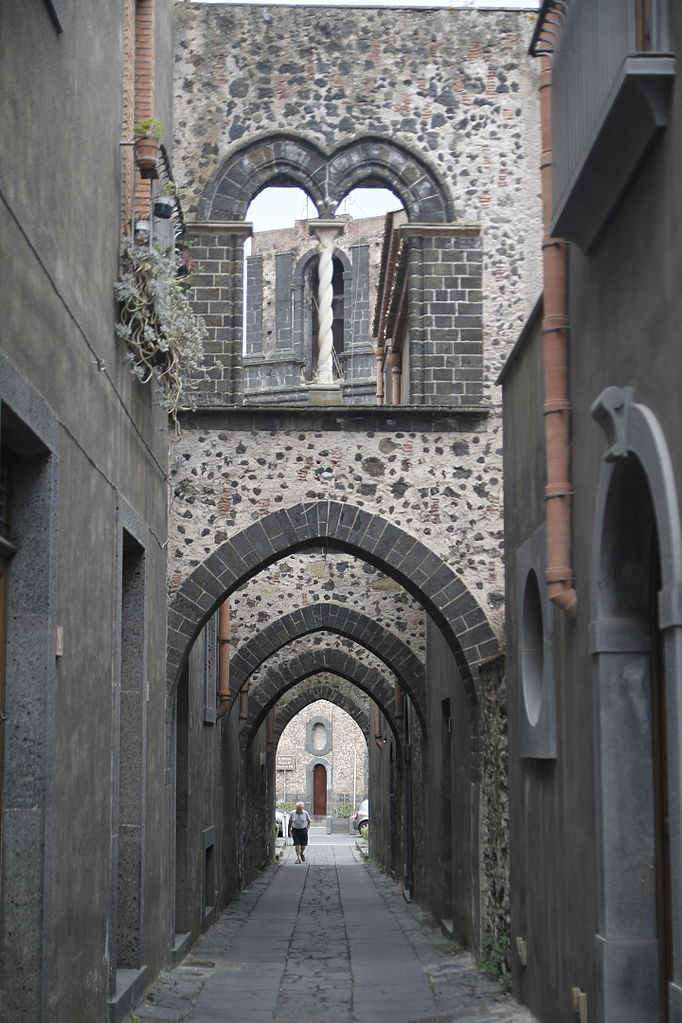
The Via degli Archi, of Aragonese origin, is very pretty. It is a very small street , next to the 14th century church of Santa Maria della Volta, characterized by 4 lava stone arches that embellish it. The ideal place to take original photos.
Medieval Music Museum
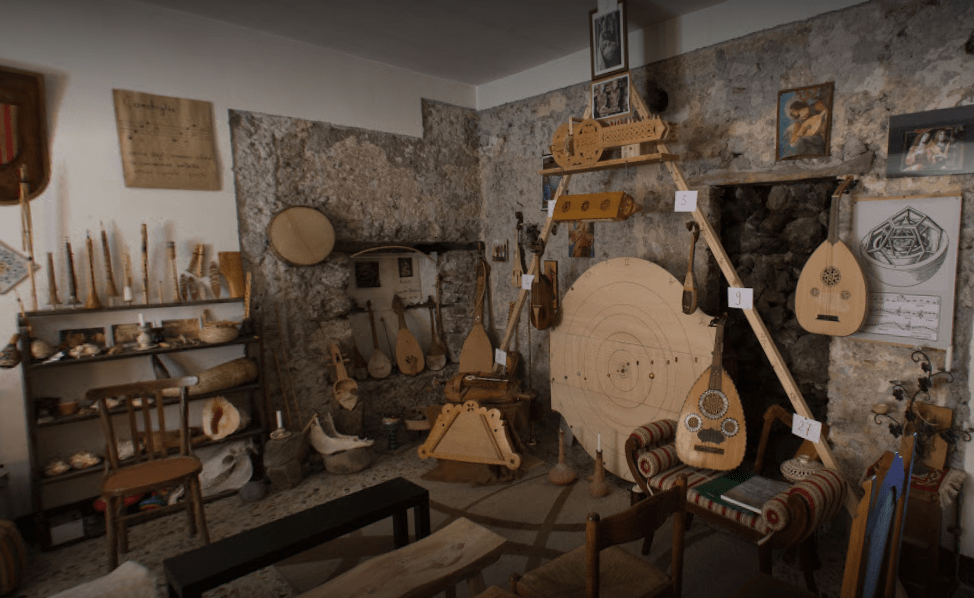
An original museum, inside a 12th century house, where reproductions of ancient instruments are exhibited (sometimes even played) , dating back to a period ranging from prehistory to the Middle Ages. Musical instruments such as bones, dried fruits, stones, horns, shells, instruments used by the ancient Greeks such as the Kythara and Kanon of Pythagoras, medieval harp and much more. A very special experience. Hours: every day from 10 to 18, ticket 1.50 Euro.
Municipal Palace
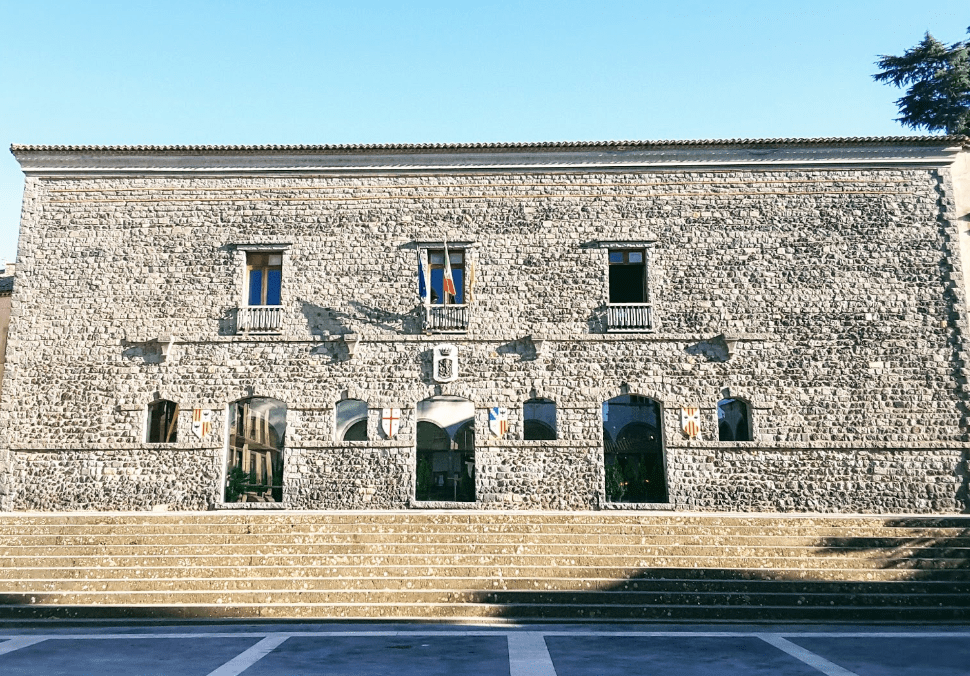
The town hall is a former convent from the 1600s. The beautiful stone facade is immediately striking and inside there is a cloister with lava stone columns, with a large cistern in the center.
Medieval Festival in Randazzo
Every year, towards the end of July, the traditional Medieval Festival of Randazzo is celebrated , organized by the Sicularagonensia cultural association. It is inspired by the figure of Bianca di Navarra, the last queen of Sicily, who lived in Randazzo in the first decade of the fifteenth century.
Parades in typical costumes, songs, dances, typical dishes and lots of good wine await you !
Gurrida Farm
If you go to Randazzo it is recommended to visit the Gurrida farm, open every day from 9 to 18. Here every Saturday and Sunday you can have lunch both indoors and outdoors and try many specialties, such as vegetables, meats, cheeses and wine that the company itself produces . However, it is better to book the table: www.gurrida.it .
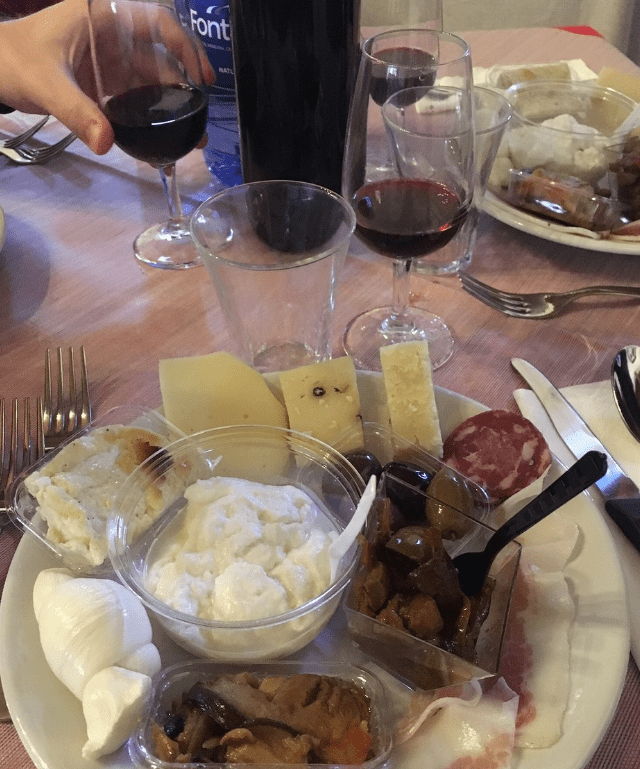
The property is located in the middle of nature, with vineyards, fruit trees and a very particular, mysterious lake, which appears and disappears every year, the Gurrida lake .
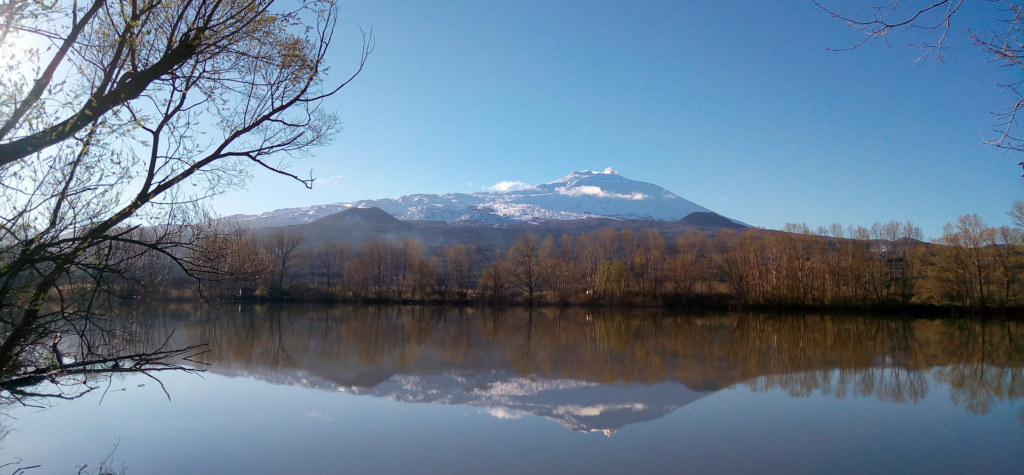
The lake was created by two lava flows from the 1500s which obstructed the flow of the Flascio river which starts from the Nebrodi. But every year something special happens, the lake continues to disappear and reappear every year , like few lakes in the world. This is due to the fact that in summer the flow of the river decreases significantly and that little water that flows passes under the natural barrier made up of lava rock.
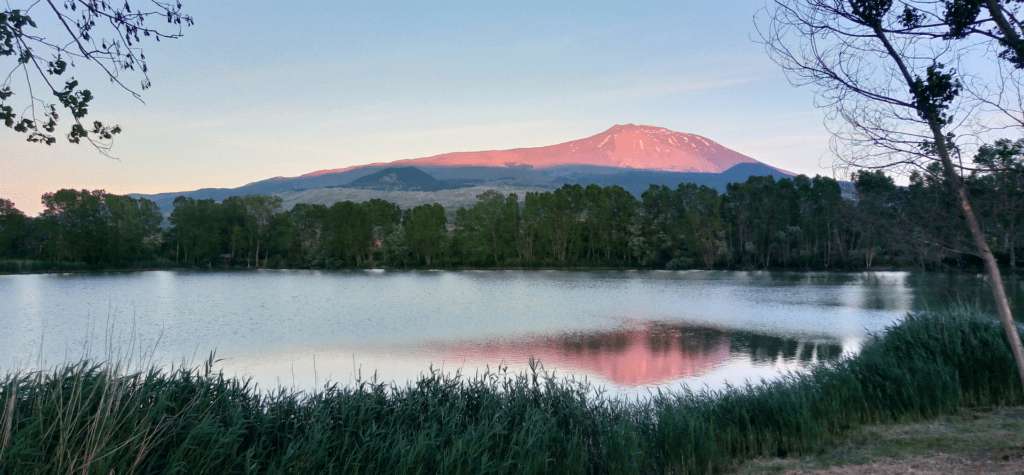
Therefore, every year, the vineyard together with the lake continues to disappear almost completely, only to emerge completely in summer. Just think that this fact allowed the vineyard, dating back to the nineteenth century, to save itself from an insect, the Phylloxerra, which in the nineteenth century destroyed many vineyards in Europe. How the vines manage to resist submerged by the lake for so long without rotting, still remains a mystery .
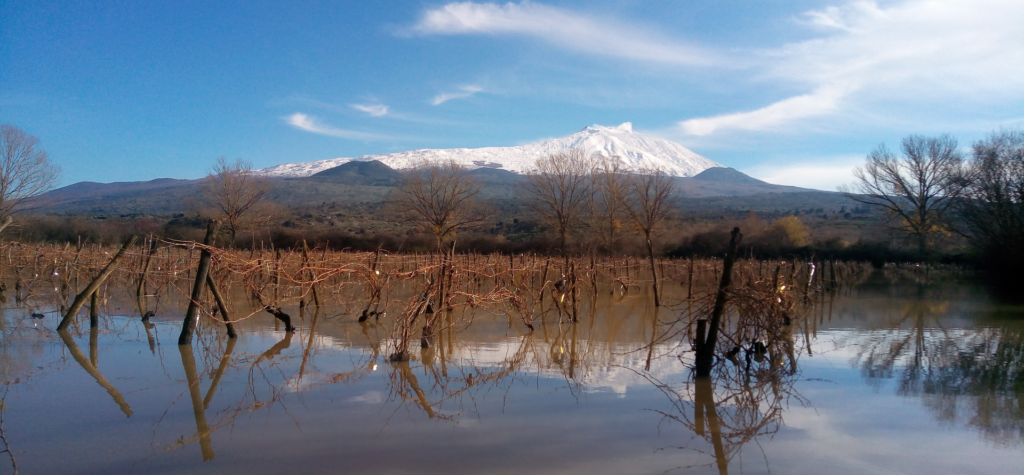
The lake is easily reachable on foot, after entering the property of the farm. If you go in the summer don’t worry, an artificial reservoir has recently been created, which maintains part of the lake all year round. The view is really very beautiful, just think that Etna, clearly visible from here, is reflected in its waters. In addition, there are many species of animals, such as turtles, herons, mallards, fish, foxes and porcupines.
Sciarone Park
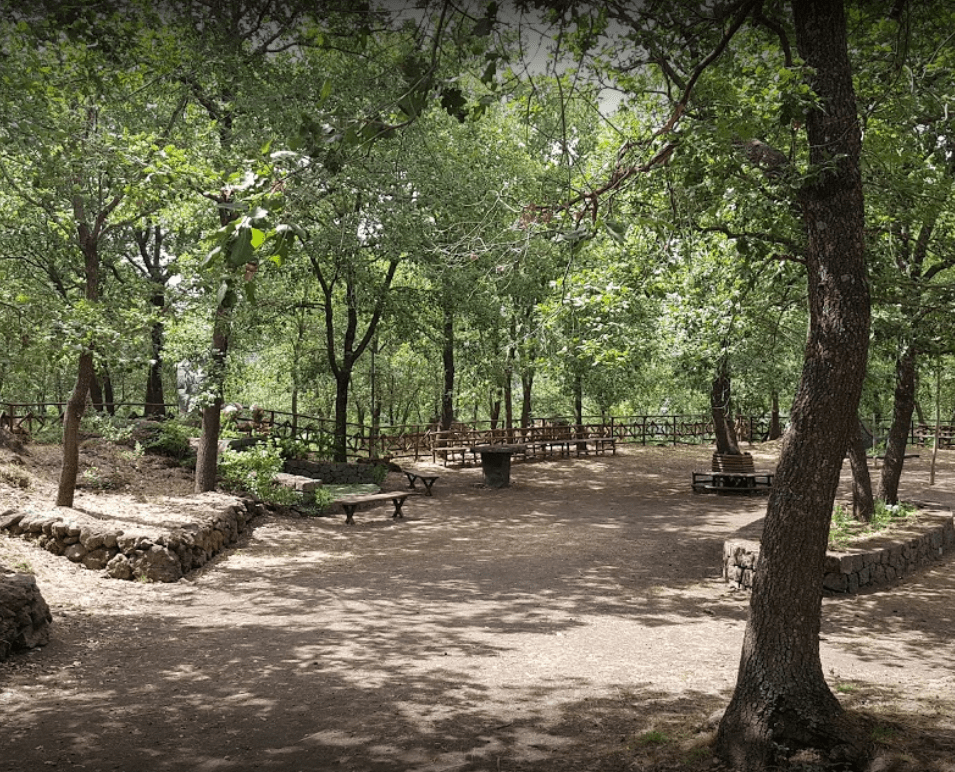
It is the green lung of Randazzo and here you can take a nice walk in the middle of nature , in a special place among chestnut trees, oaks, birches and the remains of lava flows. There are also cooking points, tables and toilets, all very well cared for, an example that other municipalities in Sicily should follow.
Top Secret Council
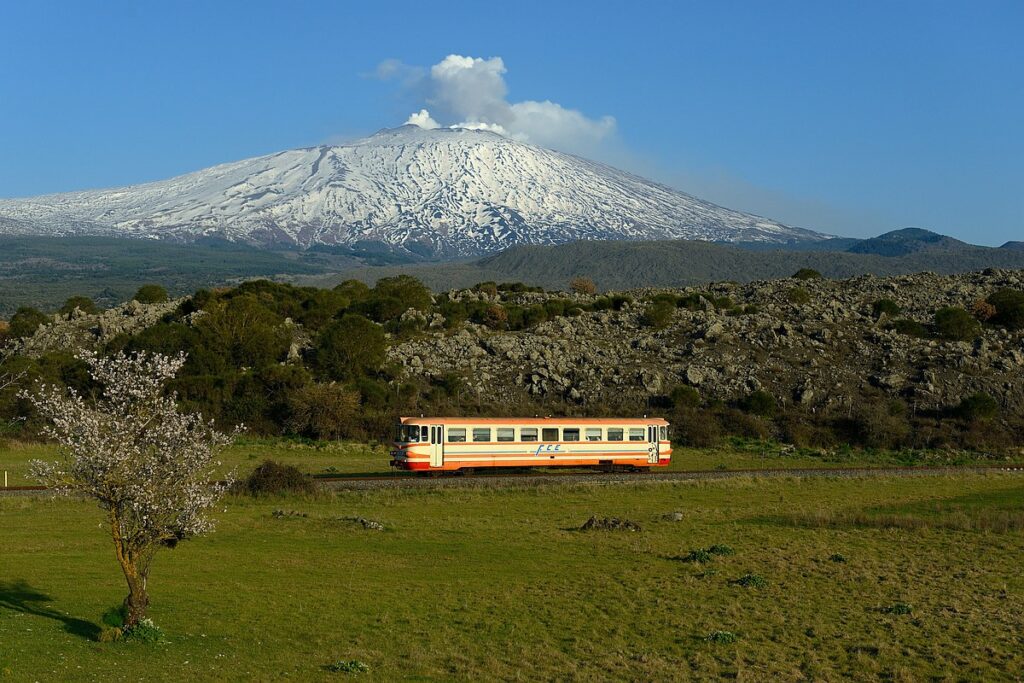
In Randazzo you can take the Circumetnea, a small train that passes through enchanting landscapes, right inside the Etna park . From here you can get to Adrano, this journey of about 1 hour is certainly the most beautiful and panoramic of all the routes.
You can buy tickets directly there at the ticket office and the price for this route should be around 6 Euros round trip. The train timetables can be found directly on the circumetnea website, in the timetables section: https://www.circumetnea.it/linee_orari.php . Remember, there are no trains on Sundays and holidays and always take into consideration the possibility of any delays.
Where to eat in Randazzo
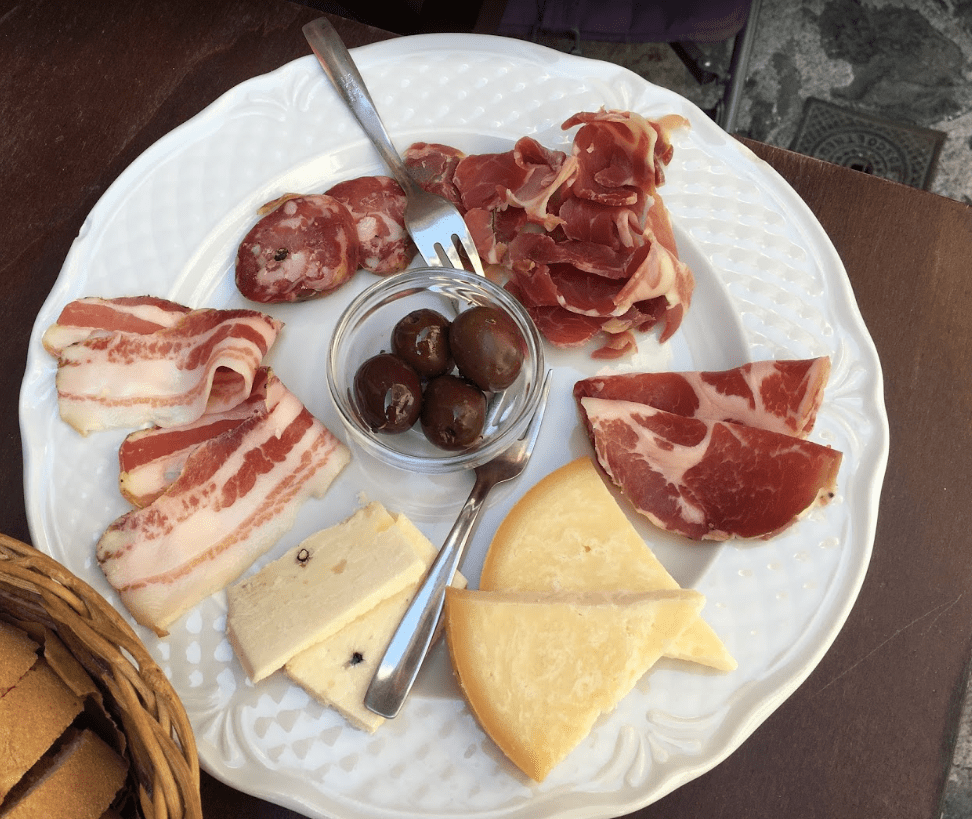
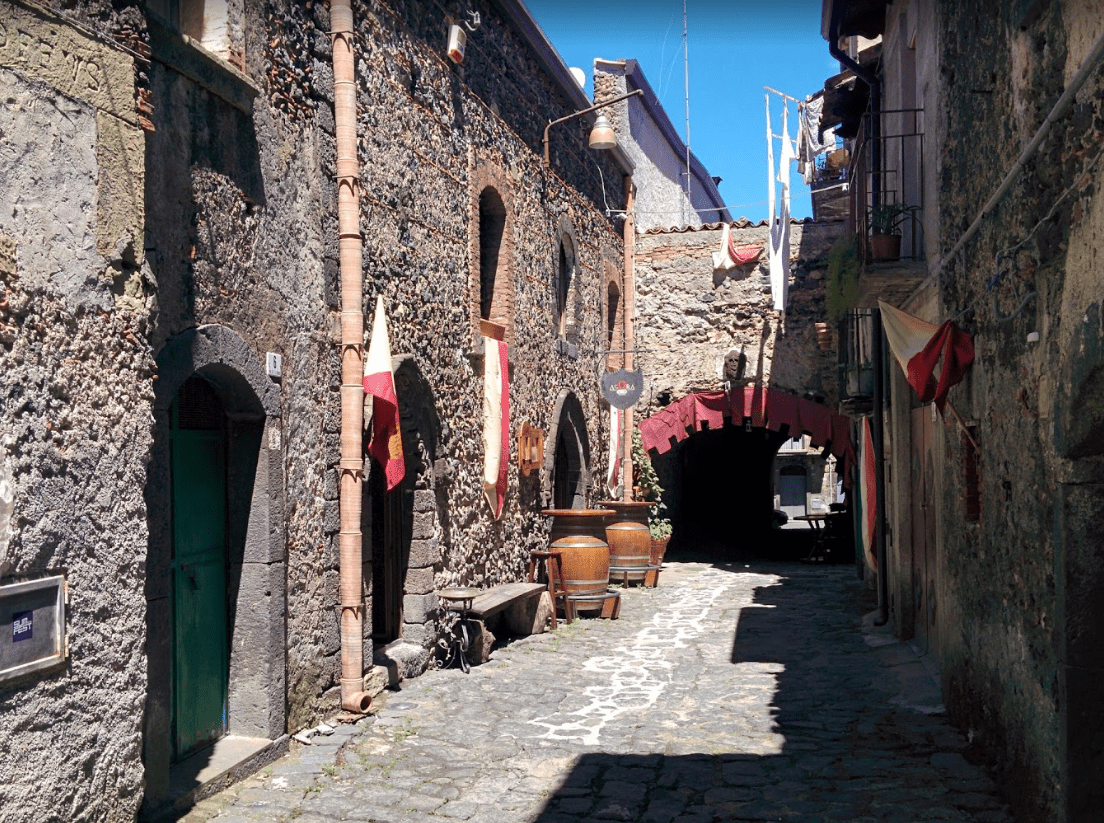
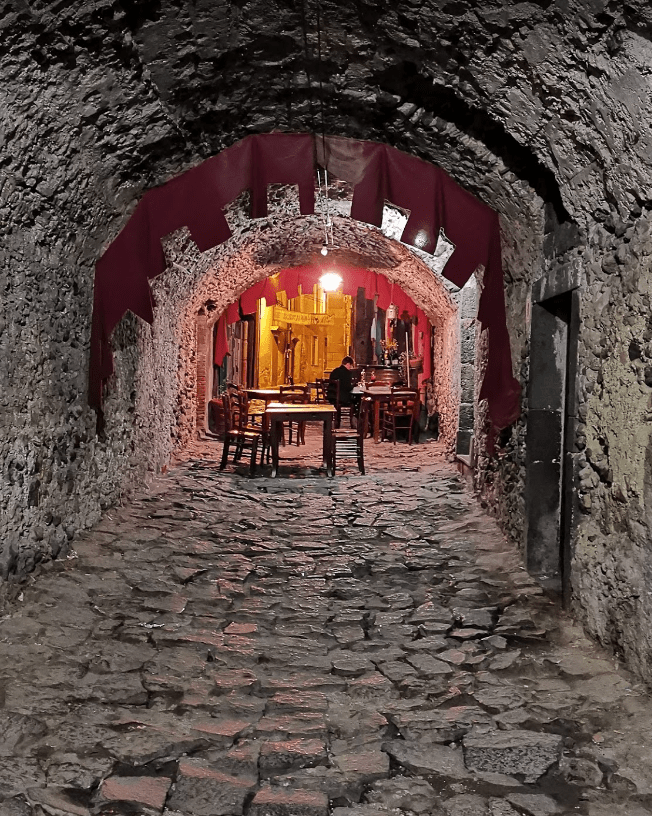
The Agorà restaurant / trattoria is located in a medieval alley of the town, a very characteristic place where you can try many delicious typical dishes.
Interactive map of Randazzo – Points of interest in purple
To locate yourself once in the area, click on the enlarge symbol at the top right of the map.
Bronte
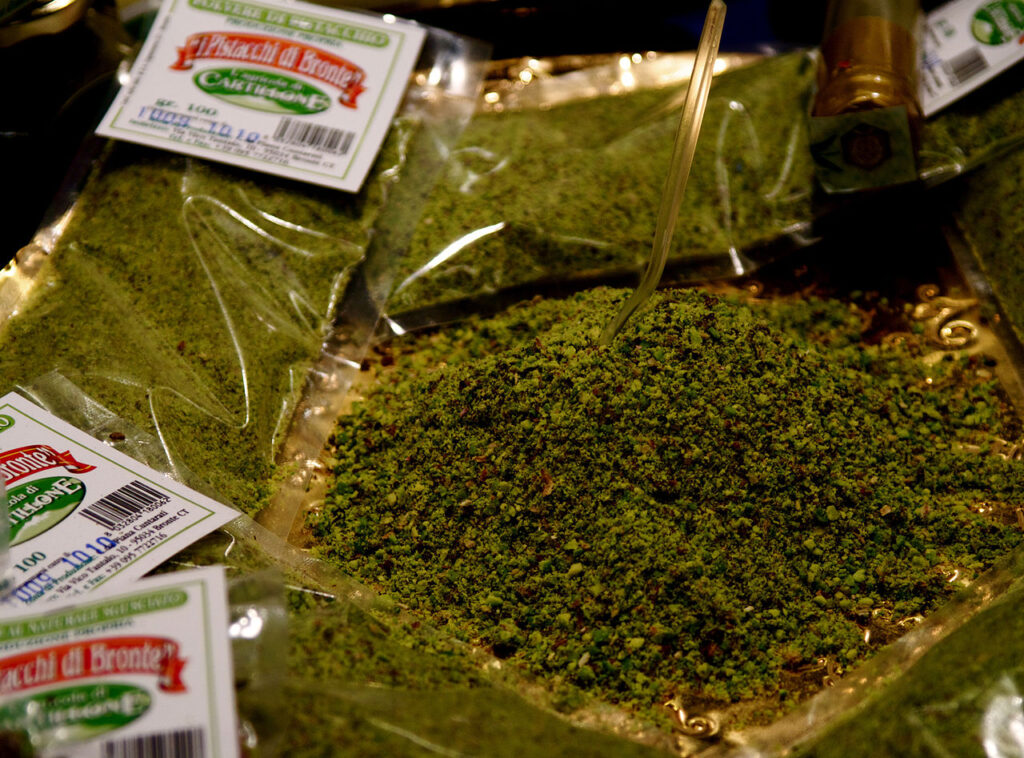
Before seeing what to visit in Adrano remember that Bronte is located between Randazzo and Adrano. The town doesn’t have much to offer from an architectural point of view, but the most famous pistachio in Italy, the Bronte pistachio, is produced here . You can buy it in this small shop.
Adrano
Adrano is famous for the production of PGI blood oranges, pistachio and prickly pears from Etna . In the historic center there is the Norman castle of the eleventh century which houses the archaeological museum of Etna, with finds from prehistoric times to the time of the Normans . From here you will have a beautiful view of the town and Mount Etna. Opening hours of the castle (may vary) from Monday to Saturday 9.00 – 19.00; Sunday and holidays 9.00 – 13.30. Ticket cost 4.00 Euros. Near the castle stands the Mother Church, also of Norman origin, and the imposing monastery of S. Lucia, rebuilt after the earthquake of 1693, with lava stone decorations.
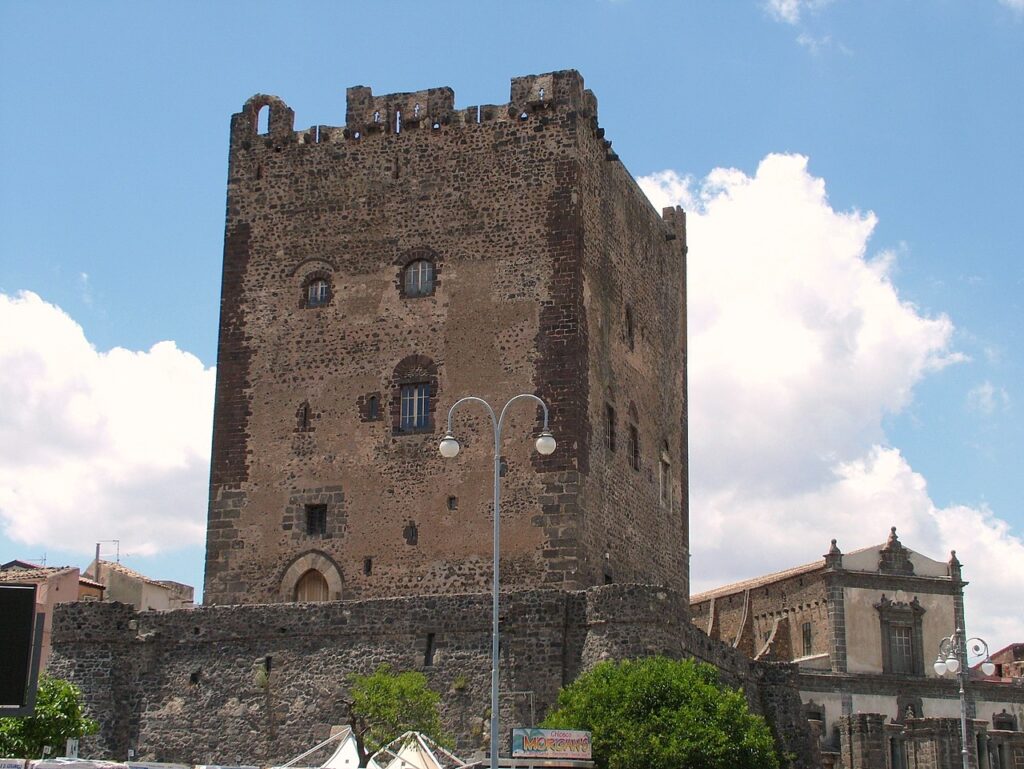
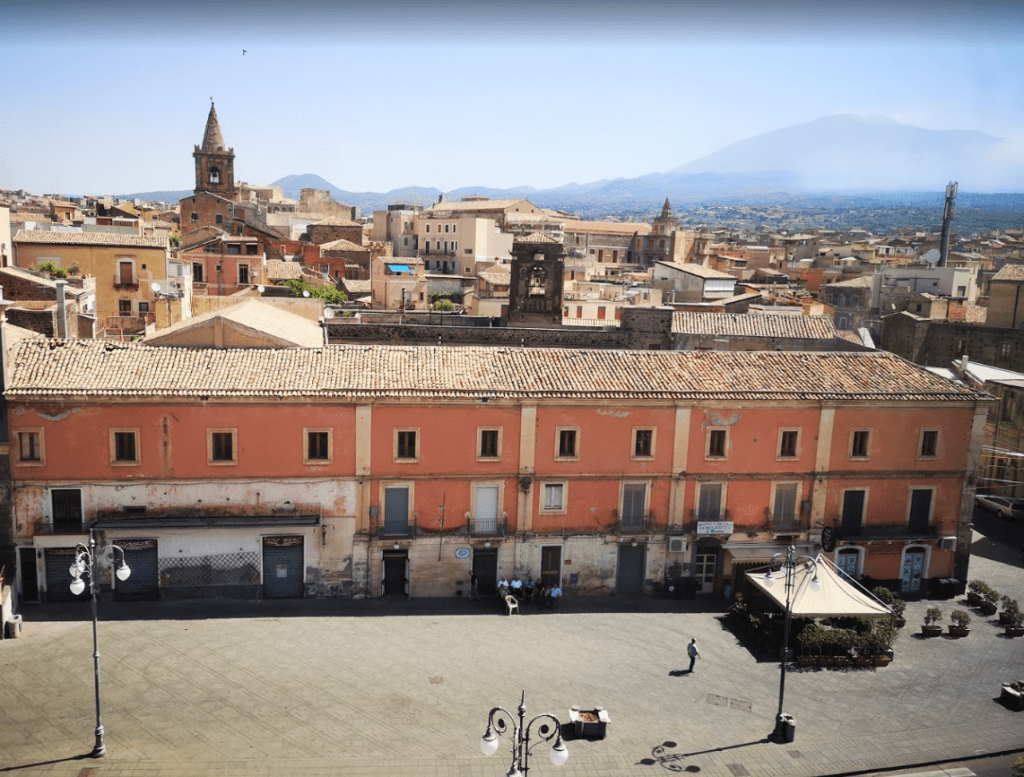
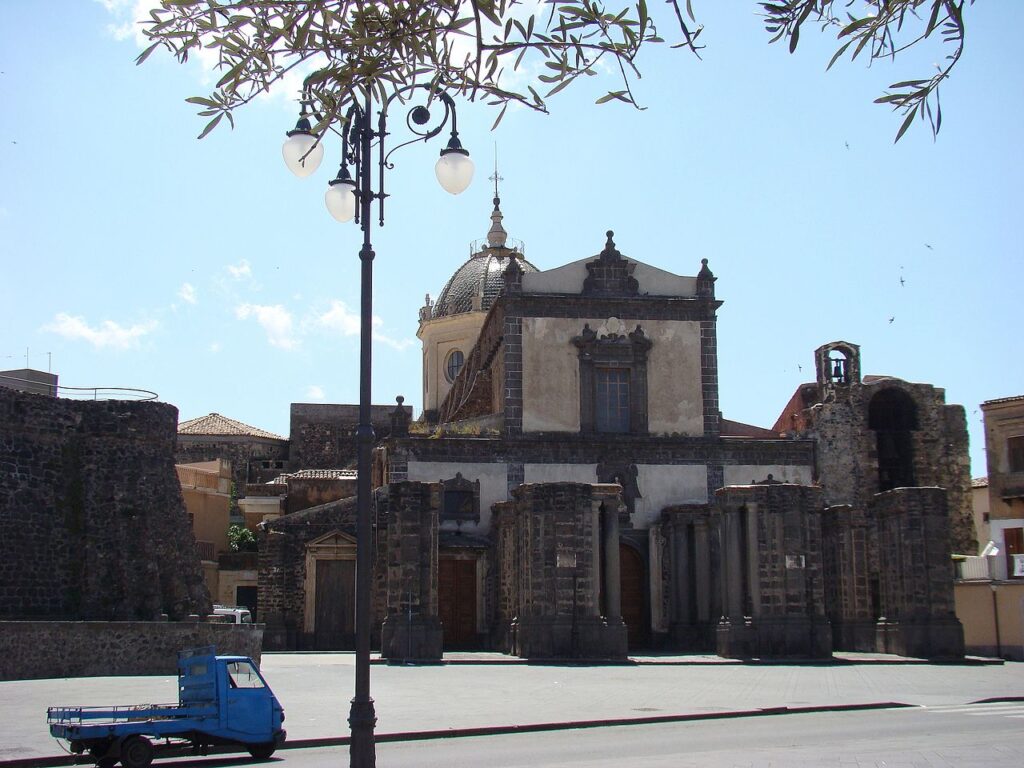
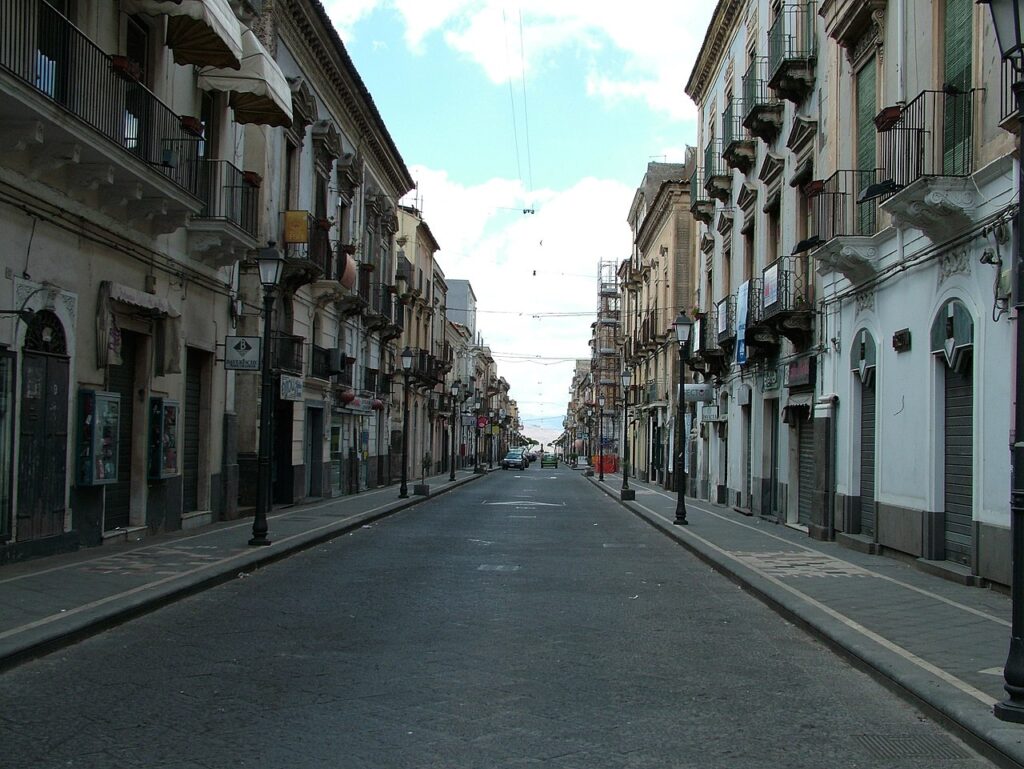
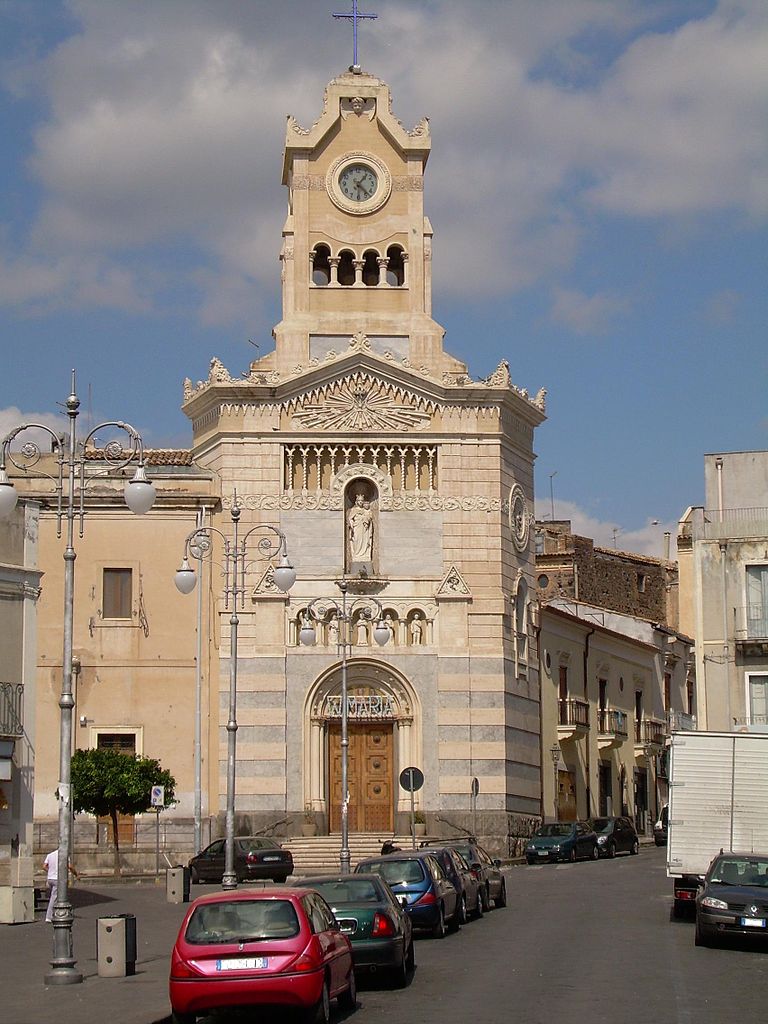
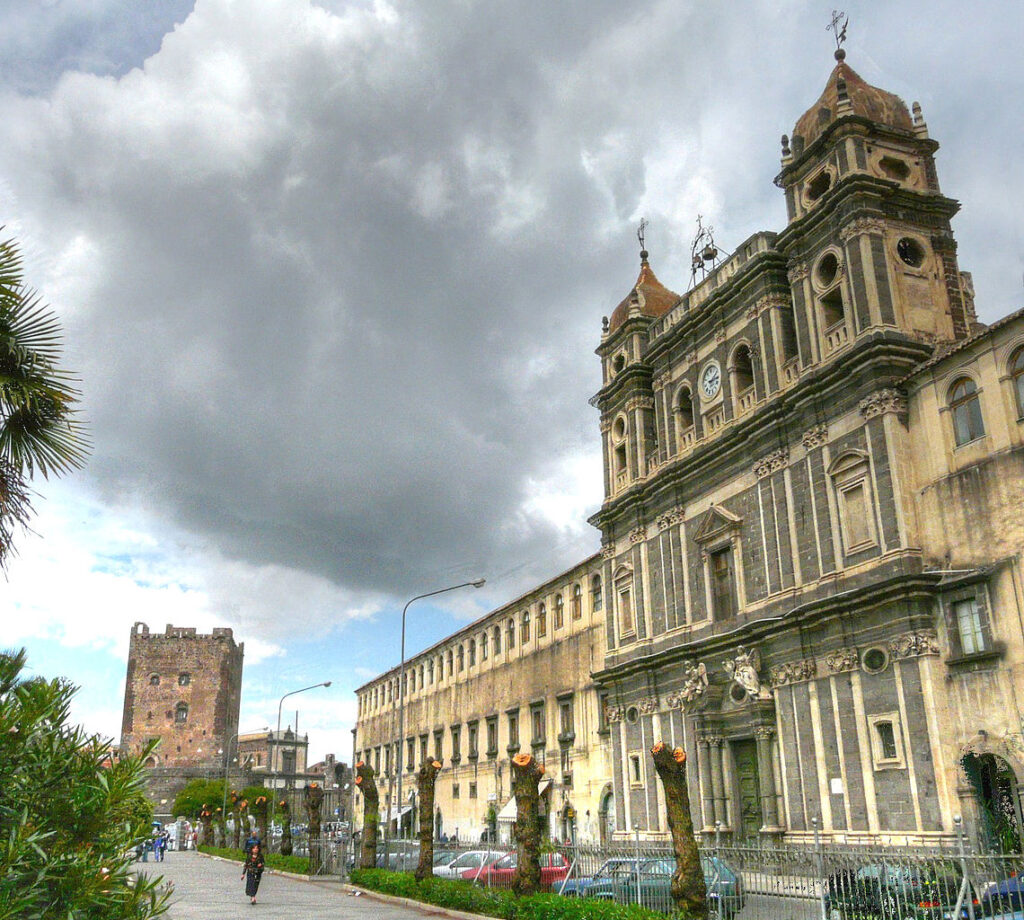
In addition to the historic center you must absolutely visit the Ponte dei Saraceni , a beautiful Saracen bridge built over the Simeto river and not far away, the ruins of the ancient Mendolito village (VI BC). The latter was a Sicilian residential center, one of the first peoples to inhabit Sicily and was built using blocks of lava stone. This is the largest Sicilian settlement ever and the greatest attraction is certainly the South Gate, consisting of a narrow corridor between 2 nougats. Over time this place has been lost and between the eighteenth and nineteenth centuries this area was divided up and terraces were built for agriculture, also of lava stone and still visible today.
A circa 15 minuti in auto dal paese si trova inoltre un luogo molto particolare, un borgo antico abbandonato abitato solo da pavoni.
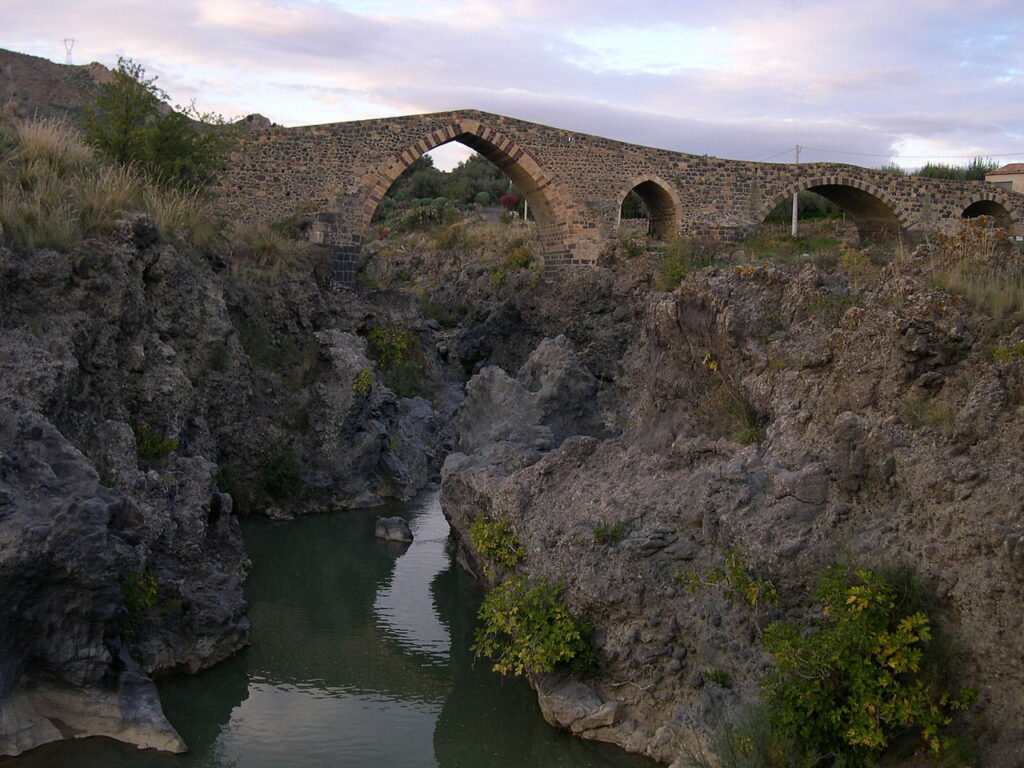
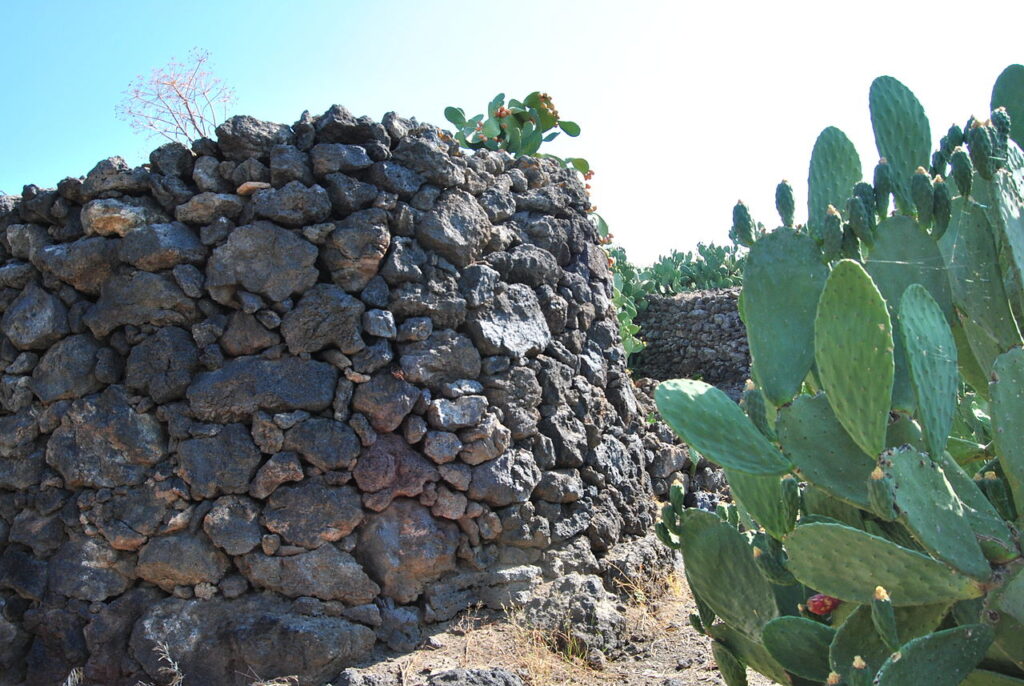
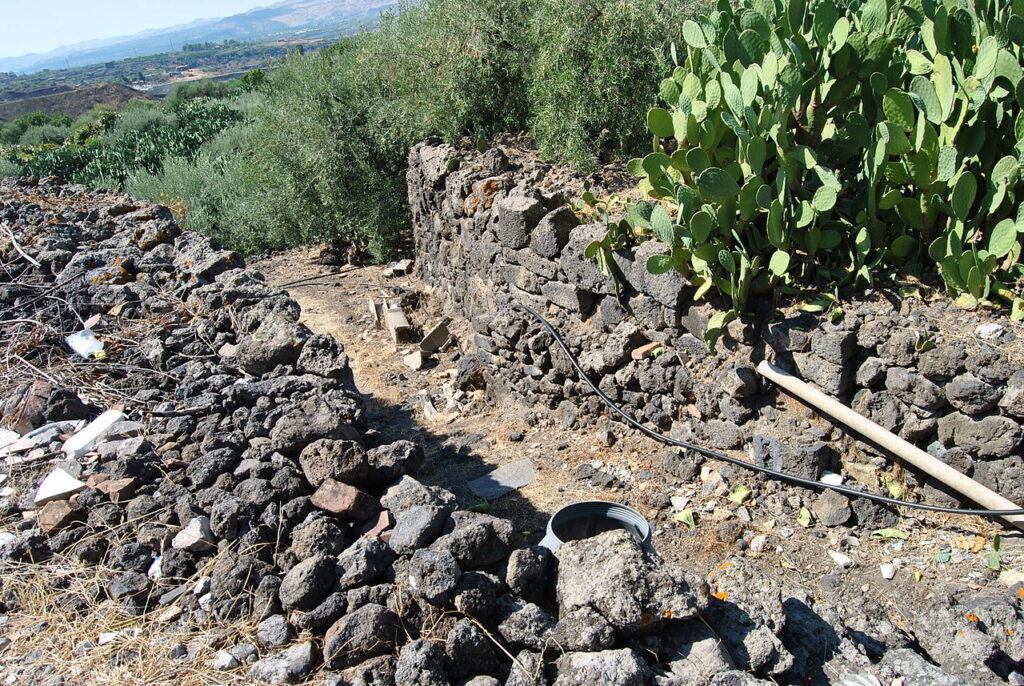
Interactive map of Adrano – Points of interest in purple
Mendolito how to get there and path
Panoramic Tour
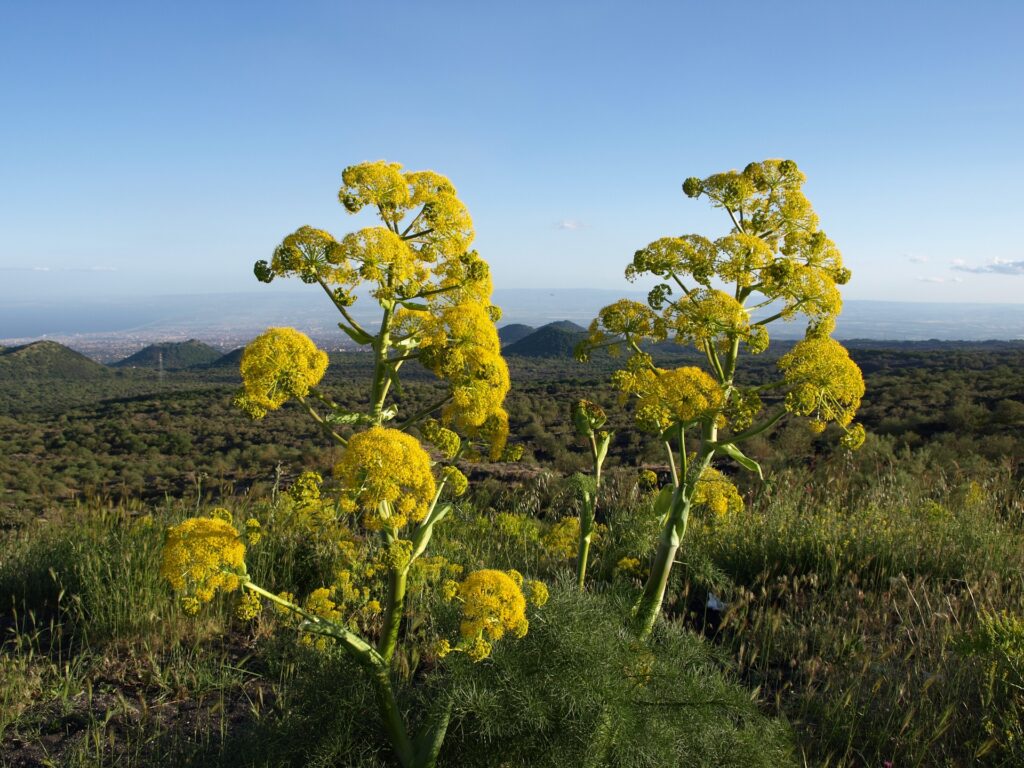
To finish the tour you can take a nice scenic drive inside the Etna park, taking from Adrano via/contrada solicchiata until you get to Nicolosi (To get to Nicolosi there is also a freeway, the SS284, if you want to take the scenic drive don’t take it). The route takes about an hour and you will be immersed in nature among brooms, vineyards, olive groves, chestnut trees, remnants of lava flows, with the summit of Mount Etna volcano in clear view.
Most popular activities for tourists in Sicily
What to see around Etna
Etna is located in the province of Catania. Here you can find the places to visit in Catania and surroundings .

Plan your vacation in minutes
🛏️ Find accommodation on offer

